














tragic and destructive events of recent years. Since its publication this summer we have seen record-setting temperatures, drought-stricken expanses, unimaginable and deadly flooding, and fires in Canada that have covered us in smoke for months.
from Colorado, where wildfires roared down the front range of the Rocky Mountains, killing people and leaving the fragile environment scorched and susceptible to erosion from flash flooding.
nature and provided measurable protection.
Like the strength shown by the tradesmen and unions that have supported it through the decades, the Outdoor Guide has been willing to take firm stands on issues and share opinions. Sometimes I feel I have not lived up to that level of fight.

I came to that conclusion after reading a new book from Torrey House Press. At my request, they sent me a free copy, hoping I might write about it and share my views. A Traveler’s Guide to the End of the World: Tales of Fire, Wind, and Water, by David Gessner, a University of North Carolina professor, was a wake-up call for me, and hopefully it will get the
attention of many others. An environmental writer for more than 25 years, Gessner spoke directly to me in the book with a message to outdoor writers that we must speak up, or else we are not doing all that is possible. The other direct connection I felt was that the author and I are the same age. Recently turning 60 was a central part of the book.
The new book asks what the world will be like in 2064, when his daughter reaches our age. What is the future of weather, heat, storms and fires?
The book documented
Hurricane season hasn’t officially started for 2023, but it’s wishful thinking to believe coastal places like the Outer Banks of North Carolina, where Gessner lives, will be spared. He describes the monster storms as angry drunks who destroy homes and families in unfettered rage. Even when they don’t make a direct hit, residents have to live in fear. Gessner moved to Carolina
Throughout the book, he visits other places in the continental United States that also face frightening weather scenarios. New Orleans, Miami, and the island of Manhattan in New York City – where his daughter will be attending college for the next four years – are below or barely above sea level.
Gessner travels with and talks to scientists and other experts along the way. Sometimes his writing gets technical, but their predictions dismiss forecasts for inches of sea rise, because they expect ocean water levels to increase by feet instead.
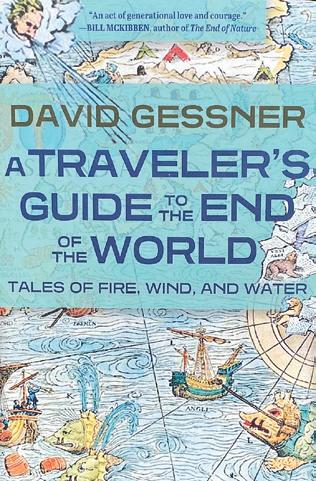
Sea walls and other manmade abutments actually increase the problem. He does point out successful projects that have returned land to
GessnerAs part of the media packet that came with the book, Gessner quoted a national survey conducted by Yale and George Mason universities.
“One of their conclusions was: ‘About six in 10 (63 percent) of Americans say they rarely or never discuss global warming with family and friends.’ One of the admittedly not-so-modest goals for this book is to make readers take a short break from their own pre-occupations and really imagine the world we are leaving to our children,” the author says.
My kids are due to reach their 60s a decade ahead of Gessner’s daughter. Based on the accelerated change in conditions over the past 30 years, the thought of what the next quarter century might bring is difficult to consider.
So this is me speaking out. I have rarely written about climate change because I have, weakly, not wanted to face the responses. I have an archived email I received when I broached the subject 11 years ago.

“Your article made you sound foolish,” the writer said. “You should stick to things you actually know about and quit ‘speculating’ about things you don’t.”
My response was, “I hope you’re right.” But in my view, the past 11 years, 11 months, or 11 days have compounded evidence that should be a warning for current generations to be concerned about the future. The deniers may consider you foolish, but we have to talk about reality, because our children and grandchildren will ask why we didn’t do more.
John Winkelman has been writing about outdoors news and issues for more than 30 years and is Associate Editor of Outdoor Guide Magazine. If you have story ideas, e-mail ogmjohnw@aol.com, and you can find more outdoor news and updates at johnjwink.com.

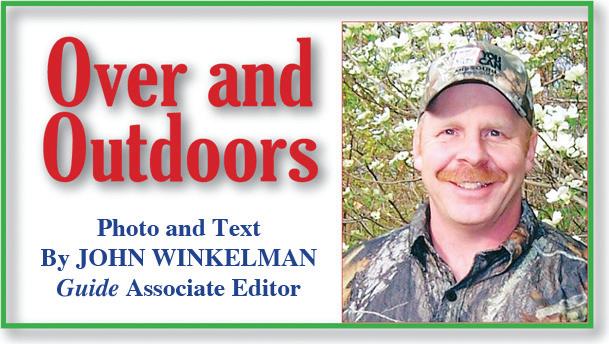

Exposure to nature can help you relax and be kind to others.
Spending time in conservation areas, woods, backyards, and urban parks may ease stress levels
Getting away from busy schedules allows people to connect with nature and themselves in a way that brings calm and a sense of well-being.
Being outdoors gives us energy, makes us happier, and helps us feel more focused
Taking a nature walk may increase creative problemsolving skills by as much as 50 percent.
Get outside and enjoy nature today! Download the free MO Outdoors app for ideas on where to go near you.
Get outside and enjoy nature today! Download the free MO Outdoors app for ideas on where to go near you.

An excellent adjunct to the fall hunting seasons is fall fishing. Anglers do not have to possess boats (and all that goes with them) to enjoy some great fishing.
The key factor is finding an area with abundant shoreline access. Scout the area for clues as to promising locations. Natural vegetation, manmade structures and natural structure are often keys to good fish habitat.
Most bodies of water have forage fish. They can be minnows, shad, shiners or any number of other fish and crustacean. The big predator fish movement follows the aquatic forage. In early fall, both tend to move into the shallows and coves to find warmer water. The predators follow them. The action seems to move near the bank.
Promising locations include areas that may be windblown and areas near the entrances to bays and coves. A good location is one made for an ambush. Land-bound fishermen obtain maps of the areas they plan to fish. On the maps, they mark the locations of structure, vegetation and depths of water. They also search out natural situations such as overhanging branches, fallen trees, submerged timber and flooded brush.
Man-made structures also provide fish habitat. This includes marinas, docks, diving platforms, rip rap, spillways and dams. One angler reports he has an old refrigerator marked on his map. He claims to have taken some big bass off that appliance. Areas where streams and rivers enter or exit lakes and ponds attract predator fish. They use the adjacent structure for concealment and then move to the faster water to feed. Eddies in rivers and streams serve a similar purpose.

Before embarking on a fishing trip along one of these shorelines, be sure to have the landowner’s permission. Assure him that you will respect his property, close gates and not break fences.
Also be sure to take all your trash out with you. It helps to carry a plastic garbage bag for this purpose. Pick up any other litter you might finds along the way. Leave the land better than
Wearing a fishing vest lets the bank-fishing angler to carry the tackle and equipment needed to catch that big one in the fall.

you found it, and you will be welcome back the next time. Next, it is important to rig your equipment to match the targeted fish species. Insect repellent is good during those times when the mosquitoes and ticks are a problem. A pocket-sized first aid kit or at least a couple of BandAids are good ideas.
As for fishing tackle, the lighter the better. A small backpacking rod and reel is a very good idea. There are several on the market. Most are ultra-light spinning rod and reel setups. Bank anglers should use a rod stiff enough and line heavy enough to control the cast in the shoreline environment.

A variety of jigs, spoons, crankbaits, topwater lures and live bait rigs will cover most situations. A small tackle box is good so you maintain the ability to be mobile. A selection of lures smaller than 1/4-ounce is a good choice. Light-color jigs are good as they are representative of several bait species.
Chest waders are a good choice for bank fishermen. Using waders allows the angler more flexibility as to where he can go along the shoreline. Bank anglers are usually most successful if they can quietly and efficiently cast to key locations for feeding fish. These areas may not always be available from land.
Patience is an important element in bank fishing. The angler must wait for the fish to come to him. The good thing about fall fishing is that the fish are hungry, and one does not have to wait too long to be in feeding fish.





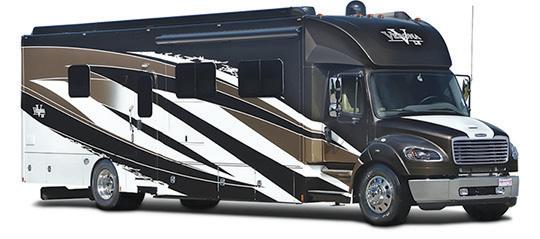


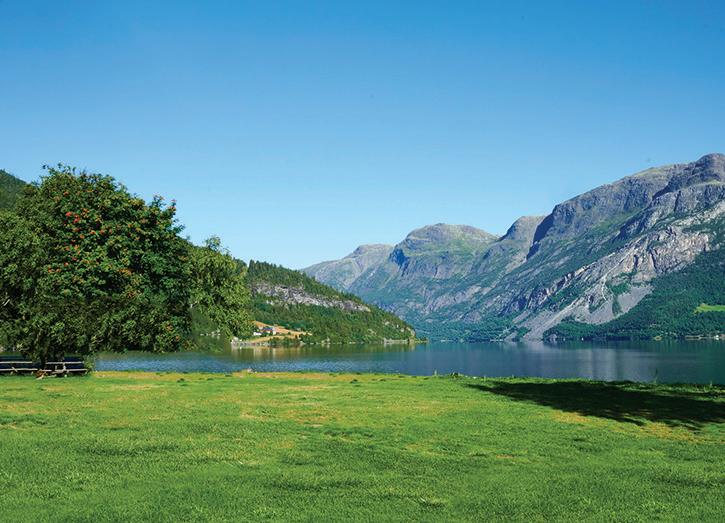





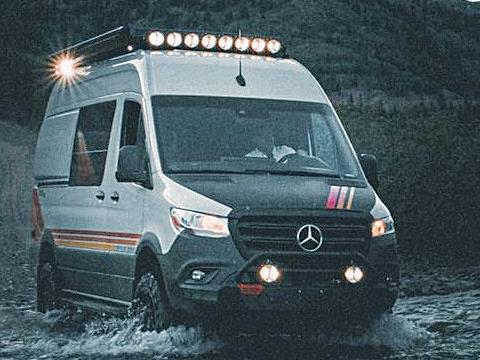


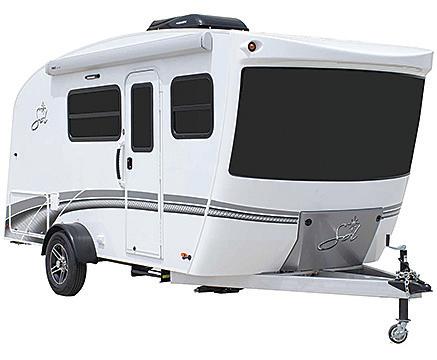






Alcohol is not necessary for outdoor enjoyment. You can go fishing without beer and you can enjoy a campfire without whiskey. This may seem like a simple statement to most people, but for some of us, it takes a long road to arrive at this realization.
For me, what started as an attempt to mirror the masculinity of men I admired, has ended with the recognition that nature, and all else in life, is far more beautiful when experienced out of the fog associated with regular drinking.
I don’t remember my first beer. I know I was way too young to drink it, whenever that day was. Stealing a few out of Grandpa’s beer fridge began when I was about 12. The fridge was in the ga-
rage next to a big mule deer mount, an early visual tie to the connection between the sportsman’s life I desired and alcohol.
My friends and I would take the beer fishing, along with any cigarettes and cans of dip we could heist. We wanted anything we could get our hands on that adults used to alter their consciousness when they were conducting the outdoor pursuits we were striving to excel at.
My Grandpa Butler was one of the coolest men I have ever known. He grew up in the 1940’s with almost no parental supervision. His mother was only 14 when he was born. She contracted tuberculosis during his teenage years and spent significant time in a sanitarium.
Grandpa had to learn to fend
The author looks toward a brighter future after alcohol.
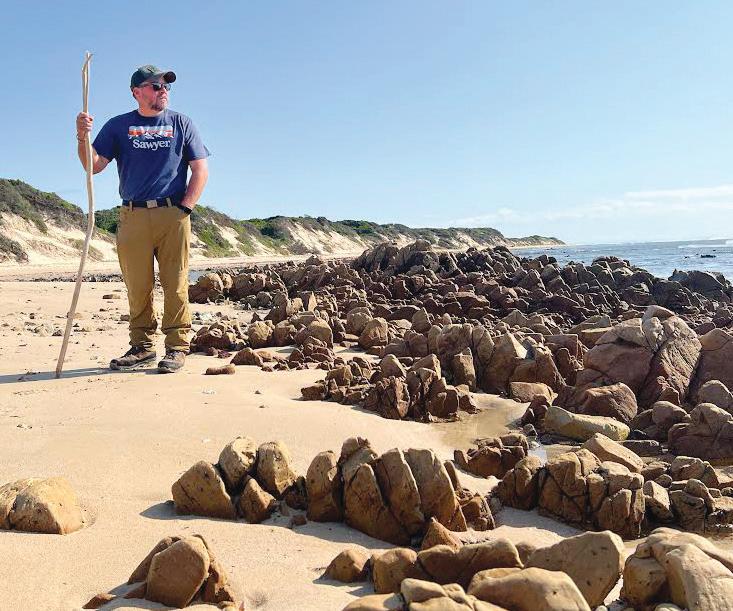
for himself early. He became a man while still a boy. As an adult, he owned every room he was in. People gravitated toward him. Outgoing, gregarious, loud, and the life of
the party. Everyone wanted to be his friend. He drank a lot of beer. He was a man to aspire to be like, in my mind. He was my hero.
My father, his oldest son, is nothing like him. My father is reserved, stoic, quiet, and content with a handful of good, close friends.
There were many years when I wished my dad would loosen up, to be one of the dads grilling brats and knocking back beers at the college tailgate like the fun parents. He never drank, and I never understood why.
Over time, I came to understand that his view of his father’s drinking was very different from mine. He’d have to ride his bike to go fetch his father from the local bar when dinner time rolled around. My father saw alcohol as a divider, a thief of the time he wished his father would give to him instead of his drinking buddies.
It takes maturity to come to understand how your actions impact the people around you. While you may not be physically placing a drink in the hands of a teenager who looks up to you, you are making an impression on them each time they see you crack a cold one. They are assimilating your happiness in the situation to the alcohol.
I was certainly a victim of this at an impressionable age. What kills me now is how I completed the circle. The influenced become the influencer.
Of course, there are certainly different levels of addiction, and far from everyone who drinks has a problem.
I know many casual drinkers who enjoy a cocktail or glass of wine and that’s it. I’m not one of those people. I do life big, and if I was going to drink, I was going to drink like Hemingway. The association of drinking whiskey with being a man’s man took hold of me. The books and movies I’ve consumed, along with real world experiences, pushed me down this path toward what I falsely thought was an admirable identity.
People in my life whom I love very much have suffered greatly due to alcohol and drug abuse. I don’t believe there are many American families that have been sheltered from such pain. Some are completely consumed by their vice. Others continue to function at a high level while remaining in the clutches of substance abuse. Many go through their day accomplishing everything life asks of them, only to settle in at night for another round of enough alcohol to kill the pain of whatever it is that ails them. Then they wake up and repeat the entire process the next day.
Personally, I’m grateful I was helped to that recognize a problem was forming, one that I don’t feel most people suspected, including myself. But a few of those closest to me did.
I’d been drinking since junior high, but things really began to escalate. The last couple of years were tough. My cabin was burned to the ground by an arsonist. I went through a horrible divorce and custody battle. I lost my home and most of the material worth I had worked so hard to build over 20 years. Then my two teenage daughters moved in with me full-time. This was the greatest blessing of my life, yet also my greatest challenge.
For the past year, I’ve had to figure out how to be a solo girl dad. In bourbon, often alone late at night, I found a way to numb the pain and anxiety.
It was also during this time when I first felt the miraculous hand of God upon me. I spent most of my life wondering why God had no interest in me, only to come to realize it was me who had no interest in God. The words to explain the blanketing comfort that has
come over me and guided me out of the darkness elude me.
I’ll just say wholeheartedly that I’ve never experienced anything like it before.
In my darkest hour, there was the faintest of light. I chose to move towards it, and the light continued to grow –until the darkness was gone. The people I needed were there along the way. They were placed on my path and I was receptive to their grace.
I’m so fortunate to have had the love and support I needed. Not all are so lucky.
In this first summer of sobriety, I have found it surprisingly easy not to drink. It’s been about four months since I’ve had any alcohol. The clarity I am experiencing is profound. The physical differences are remarkable. My doctor was amazed at how my lab results changed between January and August. I pop out of bed with energy. My thoughts are concise. And my heart is open.
My oldest daughter just began her freshman year at the University of Missouri. She’s a lot like me. In the past couple of weeks, I’ve shed quite a few tears over her transition out of the house.
But I’m also worried about the example I have set for her. I was certainly not my best at times. I behaved much more like my grandfather than my father. I can only pray she follows in her own grandfather’s footsteps and recognizes the side of alcohol that is not fun – the side that divides and diminishes the real beauty in our lives.
We all set examples, every day. Often it is in our most unassuming moments – those when we least expect our actions are having an influence at all, that we impress upon others our behaviors, both good and bad. I’m certainly not advocating for no one to drink alcohol ever, under any circumstances.
However, I will tell you, if you find yourself questioning your consumption, there is another path, a bright, beautiful path far less lonely than you might imagine. If you don’t feel like you can get there on your own, please ask for help. There is no shame in admitting you need assistance. Your life will be richer for it.
Clearwater Lake & Webb Creek Park – Hwy H
–Bring the family to camp, boat, fish, and unwind on crystal clear Clearwater Lake. This area of the lake is formed where Webb Creek and Logan Creek empty into Clearwater Lake. The lake is known for its crappie, catfish and bass fishing. Camping is available at Webb Creek Recreation Park; plus a full service marina with boat/wave runner rentals on site. Webb Creek Park features over 40 campsites, swim beach, playground, showers, picnic pavilions, boat launch, and more. Services are limited after mid-September but camping is still permitted. Call Webb Creek Marina at 573-461-2344 for marina, boat rental and campsite information or visit www.recreation.gov to make reservations.
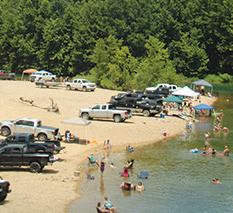
Black River and K Bridge Recreation Area – K Hwy – Float, canoe, fish and explore the beautiful Black River. Enjoy swimming, camping and picnicking right on the banks of the Black River. K Bridge Recreation Area and Campground offers playground, showers, electric and comfort station, visit www.recreation.gov to make reservations. Floats (raft or canoe) can be arranged on site by calling Jeff’s Canoe Rental at 573-598-4555. A small general store is also available on site.
Gravel Bar – Hwy 106 to HH Highway- Fish, swim, camp and relax on majestic Current River. Great place to explore Current River. This area is often referred to as Cardareva by locals and is a favorite summer hangout. Primitive camping is available right on the river bank, camping is also available at the nearby School Yard with picnic tables, lantern hooks and fire pits. These sites are available on a first come basis. Bring your canoes, rafts and kayaks; a perfect day float….Powder Mill to Log Yard. Boat launch available.
Rocky Falls- NN Hwy- A cascading crystal Rocky Creek drops from the Ozark Mountains into a lazy pool which eventually winds through the Ozarks to Current River. A must see if you are in the area and fun for all ages. Wear non-slip shoes and use caution when climbing on the falls. Picnic tables provided.
Current River Conservation Area –Consists of 28,000 acres of state land. Deer, turkey, eagles, elk and a multitude of wildlife can be seen. UTV’s, ATV’s and vehicle traffic are welcome on miles of gravel roads and trails that wind through some 60+ food plots. Buford Pond, Missouri’s first fire tower, a 1926 log cabin and an earthen Fort Barnesville can all be found here. Buford Pond provides fishing and picnicking and is a favorite location of all. For hunting enthusiasts an unstaffed rifle and archery range are provided.
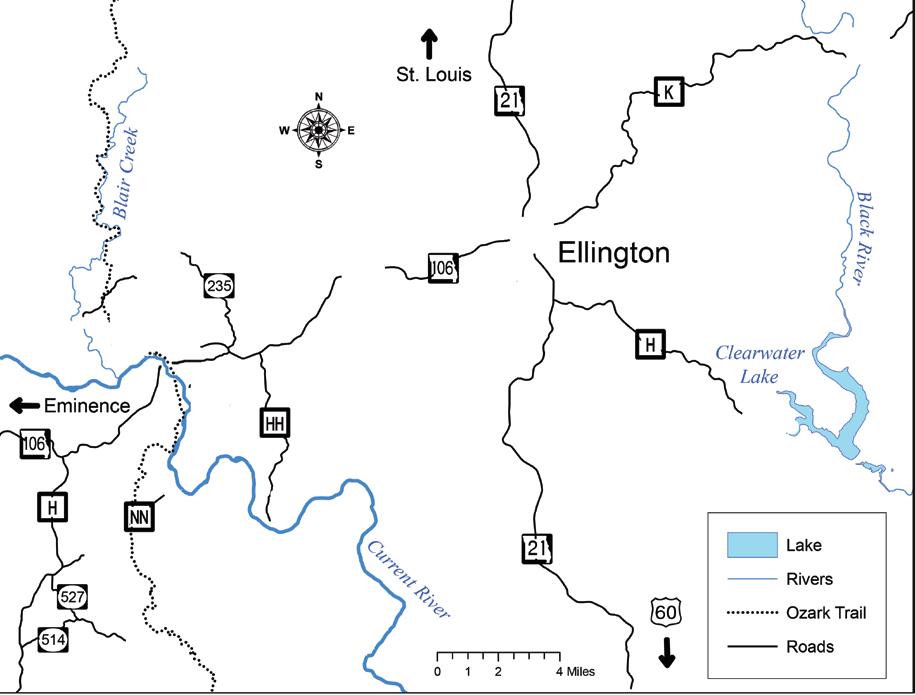
Current River Conservation Area is home to the Missouri Ozark Ecosystem Project, the world’s most comprehensive forest management study. This 100 year project spans over 9,000 acres.

Main park entrance located on South Road in Ellington, other entrances located off Hwy 106 and HH highway. Primitive camping is available. Elk viewing and maps of the area are available at the main park entrance.

Local Flavor – While in town you won’t want to miss the Reynolds County Museum. This Museum is filled with relicts from days gone by and the rich history of the Ozarks. Volunteers staff the establishment and are happy to answer questions; Open March-November, Tues-Fri, 10-4 or by appointment. Call 573-663-3233 for more information.

Want some nostalgia from a couple decades back; how about a drive in movie? One of only a few drive-ins left in the Midwest is located just south of Ellington on highway 21. 21 Drive-In opens in May with summer family favorites and offers movie events into the fall including Halloween and Christmas.
Blair Creek- Hwy 106 – This area is a favorite of the local’s spring, summer and fall. For the person who is looking for the unknown, adventure into the wild Ozark hills for the beautiful views, caves, swimming, picnicking. Here riding the back roads in ATV’s, UTV’s and 4-wheel drives is exciting and fun. Entrance located North of Hwy 106 across from Blue Spring entrance.

Ozark Trail- Hwy 106- Blair Creek & Current River section; Hwy 106 – Whether you are looking for a one day hike or want to make a few days of it; hiking these sections of the Ozark Trail is rewarding and adventurous. Such splendid locations as Rocky Falls, Klepzig Mill and Buzzard Mountain Shut-Ins are located right on the trail. For the adventurous visitor this is a must!
Peck Ranch- H Highway, Shannon County- Plan a trip for the fall to ‘Listen for the Bugle’! Elk are roaming the hills of the Ozarks and can be seen in Peck Ranch, Current River Conservation Area and the surrounding region. Thanks to the Missouri Department of Conservation’s Elk Restoration Program the herd has expanded to over 200 bulls, cows and calves. Peck Ranch and Current River Conservation Area is open from sunrise/sunset daily and offers a driving tour. Bugling occurs Sept-Nov. Check the MDC website for park closing details. Maps are available at the park entrance.

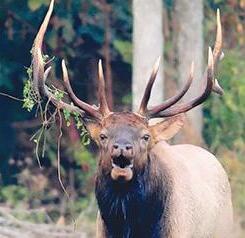
While in the area be sure to visit Black River in Lesterville, Johnson Shut-In State Park and Elephant Rocks State Park.
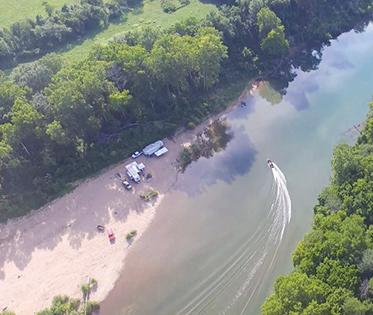
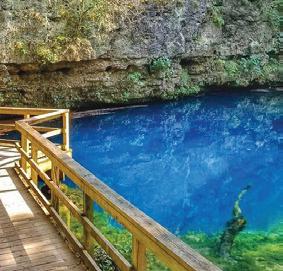
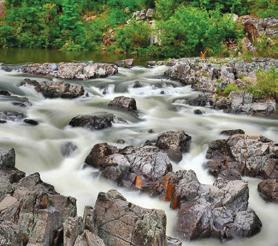

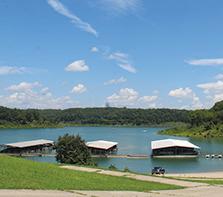
River,

Spring & Powder Mill Recreation Area – Hwy 106 near Current River bridge Powder Mill reopened summer 2020. Camping is available with views of the river, picnic tables, fire pit and lantern hook. Reservations are not available. Powder Mill is a perfect camp base for day trips to area attractions like Blue Spring, Rocky Falls, Peck Ranch, Johnson Shut-Ins, Elephant Rocks and more. Wild horses are often seen in the fields near the bridge. The Ozarks offers countless options for family adventure.
Scenic Highway 106 - This 26 mile drive between Ellington and Eminence is known state wide for its scenic views and beauty, and is especially a favorite in the fall. This section of highway is also home to the Trans-America Trail and sees many bicycle travelers from April-October. Bicycle enthusiasts say it’s one of the “toughest sections on the trail” and known for the steep hills & hollers.

OK, I admit it. It’s quite the stretch from record-breaking, sweltering Texas summertime heat to the soul cleansing, inspiring cool weather of October, but with a hint of spiritual memory muscle effort, I am able to miraculously transport myself to the dreamy magic of our favorite season any time I so desire.
Just after daybreak, each June, July and August sunrise, I grab my new Mathews Image bow and a handful of GoldTip zebra arrows and hit the 3-D range, letting my imagination convince me that those biggame targets are actually the real thing, and if I really go the limit, pretend there is a hint of frost in the air. I am telling you, I can make it as real as can be.
From varying distances and topographical conditions, I recreate actual real-world hunting sensations to test my archery form and predator concentration. In doing so, I generate near equal excitement and adrenalin that forces me to become one with my hand-eye coordination, focus, form, and critical shot sequence. The training is not only incredibly fun, but the ultimate responsible preparation for the real thing in the not-too-distant future.
STANDS & BLINDS
I have set up ladder stands and ground blinds on my Michigan and Texas archery courses, thereby duplicating the exact physical experience as my daily bow hunts come September through February.
Such duplicate stands will train me to feel comfortable and execute my shots in the same position and manner as my stands in the woods, fields, swamps and varying terrain on my hunting grounds.
Even though careful forethought for stand positioning is based on historical and traditional anticipated game movement and prevailing winds, we all know that there are no rules when it comes to predicting animal behavior, so I make it a point to take practice shots at every imaginable angle and distance.
My Muddy ladder stands
are set up at only 12-14 foot heights, but I make sure there is ample silhouette breaking cover to effectively conceal me for that moment-of-truth, hard-earned shot. I feel safer and therefore more comfortable at such heights, and when relaxed and comfortable, we are certainly able to be more ready and accurate.
When I practice shooting from my ladders, I am sure to wear my Hunter Safety System fall restraint harness to duplicate actual hunting conditions and movement considerations.
Without some such practice, we can be thrown all akilter if that strap ever gets in our way and we are not experienced in adapting to it.
There are times during the summer preparations that I will head for a particular stand and try to kill a squirrel, raccoon, groundhog, or maybe even a hog, fox, coyote, bobcat or exciting exotic in Texas.
We all know that early fall hunting temperatures can often be just as uncomfortable as summer heat, so it is a good idea to experience it before the season. I don’t know about you, but I sure as hell love it no matter what, sweat or chills.
All that pre-season archery fun can also be enjoyed in the exact same ways with my rifle and handgun as well. “Triggertime” in all its forms is the best practice in the world, and always as much fun as fun can be.
So as I prepared to wrap up my final rock-n-roll tour, “Ted Nugent Adios MoFo ‘23” after 65 years of fire-breathing, Gonzo music with my 6,821st rockout on Aug. 21 in Ardmore, Okla., I had this funny feeling that my hunting time and hunting preparation regimen would expand exponentially as time goes on.

If that isn’t the American Spirit of the Wild Dream, I don’t know what is. Go for it!
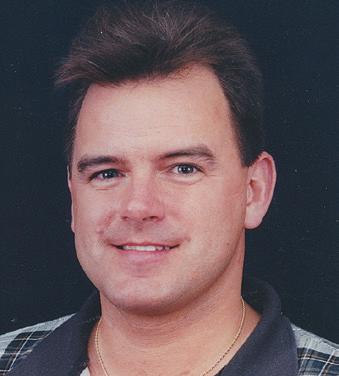
The new shooting range at the August A. Busch conservation area in St. Charles, Mo. is something to behold. Besides the wonderful KD (known distance) range for archers, there’s a pistol range for shooting up to 50 yards and a rifle range that stretches out to 100.
And there are plenty of shooting lanes with comfortable booths and benches, so unless you’re the procrastinator who waits until the week before the opening of deer season to sight in your gun, you’ll probably never have to wait in line to shoot.
I frequent the range several times a year and occasionally bring along one of my black powder handguns. I’m usually the only one making smoke with the antiquated, reproduced, 19th century technology, because everyone else is content with their Glocks, AR-15s, and everything else in between.
Of course, not wanting to be a hypocrite, I admit that I enjoy shooting my centerfire and rimfire firearms just as much as everybody else.
THE PISTOLS
The prettiest handgun in my little black powder arsenal is the Lyman Plains Pistol. This modern reproduction of a 19th century mountain man’s pistol has a finely figured walnut stock and polished brass and steel furniture. The 9” barrel is equipped with old-fashioned iron sights.
The one that I own is .54 caliber and can be loaded with up to 60 grains of black powder or BP substitute. With a 224-grain lead round ball and a full charge of GOEX FFFG black powder, it is a close-range powerhouse.
However, I’ve found that a lighter load of 40 grains is more accurate and comfortable to shoot. And though it wouldn’t be my first choice for hunting, I’m confident that I could harvest a deer with it at 25 yards if the chance ever presented itself. To be honest, the nostalgia of shooting and plinking with this early 19th century replica was the real reason I acquired it in the first place.
My first choice for hunting deer with a BP handgun is more a hand-cannon than an actual pistol. The CVA Optima V2 pistol has a .50 caliber, 14” stainless steel barrel, and is mounted with a Simmons gold-medal (2X) handgun scope.
Though it doesn’t replicate anything from the past, this modern, in-line, muzzle-loading pistol can be loaded with up to 100 grains of black powder or BP substitute and heavy, conical-shaped bullets.
The Optima also utilizes 209 shotgun primers instead of percussion caps, making ignition of the powder charge more reliable. My favorite load is 80 grains of Pyrodex (p) and a 295-grain power-belt bullet. This load rivals the modern .44 magnum in power. The CVA Optima V2 can also be loaded with Hodgdon’s T7 or Pyrodex pellets for quicker and more convenient loading.
Though I haven’t harvested a deer with it yet, I’m confident that I can make a good shot up to 100 yards from a good, solid rest.
Sam Colt’s 1860 Army was the most popular handgun during the Civil War, followed closely by Remington’s solid-frame revolver. Even to this day, I don’t believe there’s ever been a more handsome revolver than the 1860 Army.
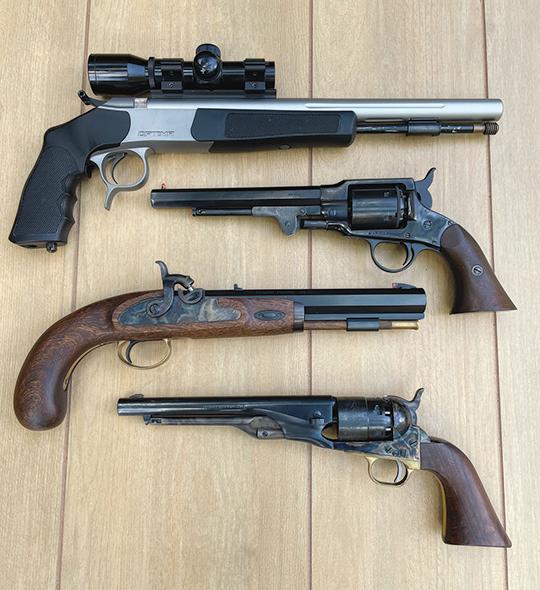
The point-ability of this sleek, cap-n-ball revolver is rivaled by none, and being a .44 caliber, it was deadly at close range. The cylinder chambers can be loaded with 30 or 35 grains of black powder and a 140-grain lead ball. This load is on par with the modern-day 38 Special, but you’re shooting a much larger diameter projectile (.45 as opposed to .357).
With my Pietta (Italian-made) reproduction, the sights are just like the originals, consisting of a brass blade front sight and a tiny v-notch cut into the revolver’s hammer for the rear sight. The first time I took it to the range it was shooting about 12” high at 25 yards (which is normal for these guns) so I had to widen and deepen the v-notch on the hammer with a small file to bring the impact of the bullet down. Now it is plenty capable of beer can accuracy at 20 yards and makes a fine backup gun for the alternative deer season here in Missouri. My all-time favorite percussion revolver is Euroarm’s version of the Rogers and Spencer. This revolver resembles the Remington and Whitney revolvers that were often carried during the bloody conflict. This solid-framed revolver gives a better sight picture than the open-top Colt and can tolerate a larger powder charge. During one Missouri muzzleloader deer season about 20 ago, I harvested a nice-sized doe at 18 yards with this revolver. The 120-pound deer managed only about 40 or 50 yards before it succumbed to the heart shot. The cylinder chambers were crammed full of 40 grains of GOEX FFFG and .454 lead round balls. Though not considered a magnum by today’s standards, the 140-grain pure lead ball moving at approximately 900 fps did the trick.
Most of the aforementioned BP handguns are still in production today and can be purchased from Cabela’s, Dixie Gun Works, or Midway USA, just to name a few. Since the ATF considers these antiques and not modern firearms, they can be shipped to most places in this country, right to your front door.
And though shooting a black powder handgun can be a fun and nostalgic experience, the preparation for shooting and then cleaning afterwards can be a little tedious. Before loading your revolver or pistol, the bore and cylinder chambers must be completely free of any cleaning solvents, oil, or powder residue. If your powder charge becomes soggy or wet, it can cause a hang-fire or misfire. The flash-hole channel in the nipples or breech plug must also be clear of any contaminants, or else the fire from the exploding cap or primer will not reach the powder charge, causing another hang-fire or misfire.
Usually, busting a cap or primer or two on each nipple (with an empty chamber of course) will help clear the flash channel. Also, black powder and its substitutes are very corrosive, so your gun must be thoroughly cleaned shortly after the range session or hunt. Even with all that, I still enjoy busting caps and making smoke with my black powder handguns.

Catching your first fish is a big deal. Unfortunately, I don’t remember mine, and there is no record of it. Chances are, knowing my grandpa, I caught it before I could walk.
So when I have the chance to participate in someone catching their first fish, I like to try and make it a memorable experience. To set the
stage for a special memory of a first fish, go fishing at a place you can return to in the future, and put some effort into capturing a quality photograph of the person with their first catch and the people involved.
I was fortunate to have an opportunity to provide a first fish experience recently to a special 7-year-old girl whose mother had expressed to me a growing interest in nature and time spent out -
doors. When I proposed the idea of taking her daughter fishing, everyone involved in the decision was excited, especially the child.
ZEBCO RELIABLE
We started in the front yard with a few casting instructions using a practice plug. It took her no time to start casting 20 to 30 feet accurately. I had purchased a new Zebco 33 for the experience. This is likely the

best-selling fishing reel of all time, for good reason. The basic push-button design is simple to use, and the quality of the reel makes it reliable. It’s perfect for kids or any beginning angler. When you push the button, you can count on it to work.
The new reel was mounted on an old rod that one of my daughters had as a kid. Both of my girls have outgrown the colorful Bass Pro Shops casting rods of their youth.
Catching your first fish is a big deal, as this little girl’s smile shows.
They have graduated to more complex spinning outfits, making it a good time to share the magic and put one of their old rods in the hands of a little girl who could appreciate the childlike design while feeling the pull of her first fish.
THE BARBIE POLE
I clearly remember my oldest daughter’s first fish. We were fishing a private strip pit in Linton, Indiana. The little lake was full of fish. There was no question about whether she would catch a fish or not. The questions were simply when, where and how.
She was still little enough to be using a Barbie pole, one of the little 3-footer types. We went simple with a bobber, sinker, hook, and worm. She caught a big, beautiful bluegill from the shore right in front of the little cabin where we were staying. We took a picture, but I was wearing an old t-shirt with the sleeves torn off. I wish I’d had a little more foresight to capture a better image.
Sadly, I must admit that I don’t remember my youngest daughter’s first fish. I suppose such is the case too often for younger siblings. While there are plenty of memories special to her, for some reason the first fish memory eludes me. I
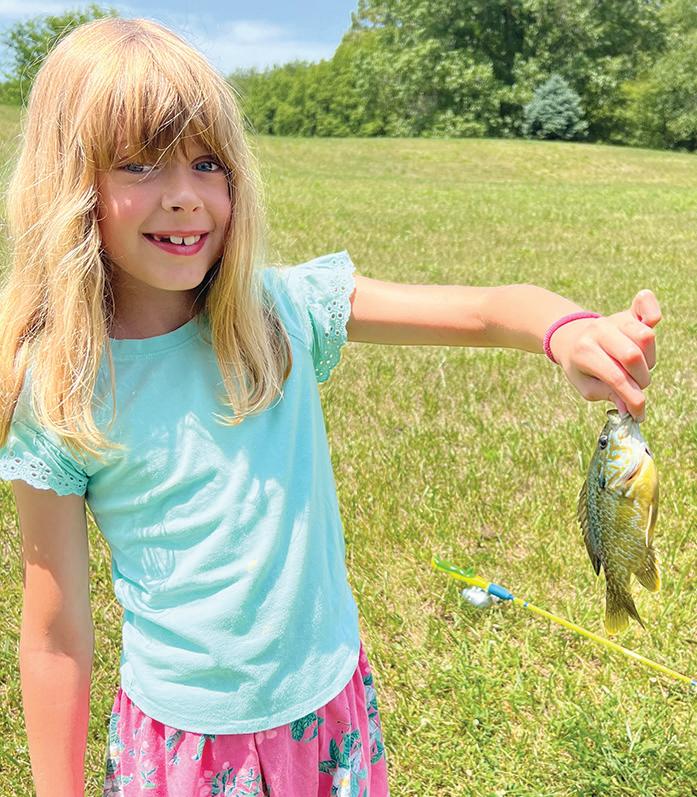
suppose we were fishing often enough to have the experience blend into a big pool of fish. I have numerous photos of her with early-on fish, but I don’t know which one was first.
This most recent experience with the young girl I took fishing was not one I would allow to be forgotten. I made sure we were prepared to create a special memory. We went to my aunt and uncle’s land, where they have a beautiful pond in which they stock and manage fish. On the way there, I was telling her that she was going to catch her first fish today. With big smiles and cheer in her voice, she proceeded to tell me I could not predict the future. To which I replied, “Oh, yes I can.”
I was surprised she didn’t catch a fish on her first cast, but she did on her second, a very nice red ear sunfish. Watching her face light up and hearing the excitement in her voice as she cranked on the reel and dragged the fish into the grass had to be just as exciting for me as it was for her. These are the moments outdoors I live for now.
For more Driftwood Outdoors, check out the podcast on www.driftwoodoutdoors. com or anywhere podcasts are streamed.

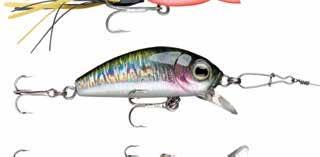


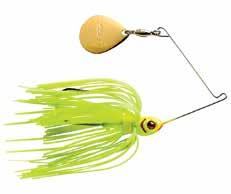














Throughout the years I’ve owned and operated numerous breeds of bird dogs. That’s probably why I quickly sprouted gray hair at an early age.
The first was a German short-hair pointer, Chester – a hard-charging, hard-hunting, and hard-headed pooch that would wind and pin down those monster Kansas quail as well as any national bird dog champion and on the next day, wildly streak over the horizon after a flushed pheasant with the same, unbridled laser focus of a Ritalin-driven wide receiver intercepting a 70-yard pass.
After about four years of this, my buddies and I got used to the performance and just rolled with it.
THE GIRLS
Then came the redheads,
Patty and Judy, two of the most gorgeous Irish setters in Missouri. They were thorough in their hunting, staying close. Excellent noses, and oh, so stylish of points.
I competed with those ladies and won a few times. But don’t let their looks fool you. They would point uplands all day long, all flowing red hair, arching sickle tails and perfect retrieves, and then come home and without hesitation, kill any raccoon or groundhog that dared to tread upon the yard.
One time they even displayed such a precise execution – right in front of my future son-in-law!
I, again, just rolled with it as normal activity on the homestead. Later, my daughter had a malevolent discussion about my proper behavior when company is here ... and those dogs! Still, each lady received a rib bone as reward. Rural bounty sys -
ENTER A BRITT
About when the Irish setters were in their senior years, I acquired a Brittany, Roy. His lineage included the Tequila Joker/ KC Bandit lines. This genetic soup served up a larger than average Brittany, 50 to 60 pounds’ worth.

Of all the bird dogs, Roy was the most gentle, even-tempered, and mannerly. Except he had a habit of slipping up behind other dogs and stealing the birds right from their mouth, then bringing them back to me as if to say, “Dad, those guys are just too slow. We’ve got to keep this show moving!” And then he would fly off to the next point.
THE MIRACLE
But Roy had a stroke when he was about three. For the first week he didn’t move.
We fed him, bathed him, and exercised his legs, hoping for some miracle.
And then it came. In about 10 days, Roy simply got up and walked around.
He was slow at first. The stroke left his front right leg straight and stiff. But he quickly gained strength.
By hunting season you couldn’t tell anything was wrong. Now, he couldn’t make tight corners – more of a wide sweeping arc. And you had to watch when he came flying back around to check in as he might plow right into your legs. But we rolled with it.

Roy sired several litters, and when he was getting up in years, I kept a pup back. I named him Riggs.
Riggs had all the best in hunting genetics packed within him. But somehow, as to hunting, Riggs must have skipped class that day. He showed no interest (and still doesn’t) in birds, and he will somewhat run after a rabbit if it doesn’t get too far ahead of him. But just as well, there aren’t any quail around now and I’m getting old enough that just a half-day hunt is like a long weekend safari in the Kansas prairies.
Riggs likes to just hang out with me and rarely leaves my side. And sometimes that can cause a little problem, which brings me to this. I’ve always liked to entertain and participate in some of the various national events that sometimes seem to fill most of the calendar year. You know, like National Donut Day, National Lazy Day, and National Phone In Sick Day.
So a few years ago, my dear mother-in-law reminded me that the following day was National Naked Gardening Day. Not to be one to ignore such a thoughtfully sanctioned holiday, and considering the nearest neighbor is about a half-mile away, I dressed in the appropriate attire and sallied forth to the garden and blackberry plot.
Now, even a clumsy wrangler of bothersome wildlife has enough common sense to bend W-A-Y over to pluck
Pondering past times, good and bad, with old Riggs
the succulent dark fruits from the blackberry brambles, avoiding unwarranted flesh offerings to the hooked talons along those gnarly canes.
DOWN, RIGGS, DOWN!
What isn’t of common knowledge is the inquisitive nature and bold, explorative behavior of a coldnosed Brittany spaniel, a.k.a. Riggs.
Regarded as a breed known for its stealthy approach on upland birds (not him) and close bonding of family (mostly just me), this chap –unabashedly representing the breed honorably – breached the bounds of personal space. My personal space.
Jackrabbits and kangaroos will never win a standing broad jump competition against a mild-manner, grey-

haired senior citizen – lost in thought, picking berries – when inspired to vault forward by the flared, 32-degree nostrils of his four-legged companion exploring the valley of his sagging derriere.
The following goose-stepping, high-kicking routine would make any Rockette hang her head in shame. The verbal dressing-down of the Brittany would blush most drill sergeants ... and the self-imposed skin piercing would likely cause a worldwide fad. An all-organic epidermis collage of stickers, you know.
All this because I thought I had to observe a crazy holiday meant for some nudist camp tending window sill flower boxes. I never learn. They’re bird dogs. I just roll with!

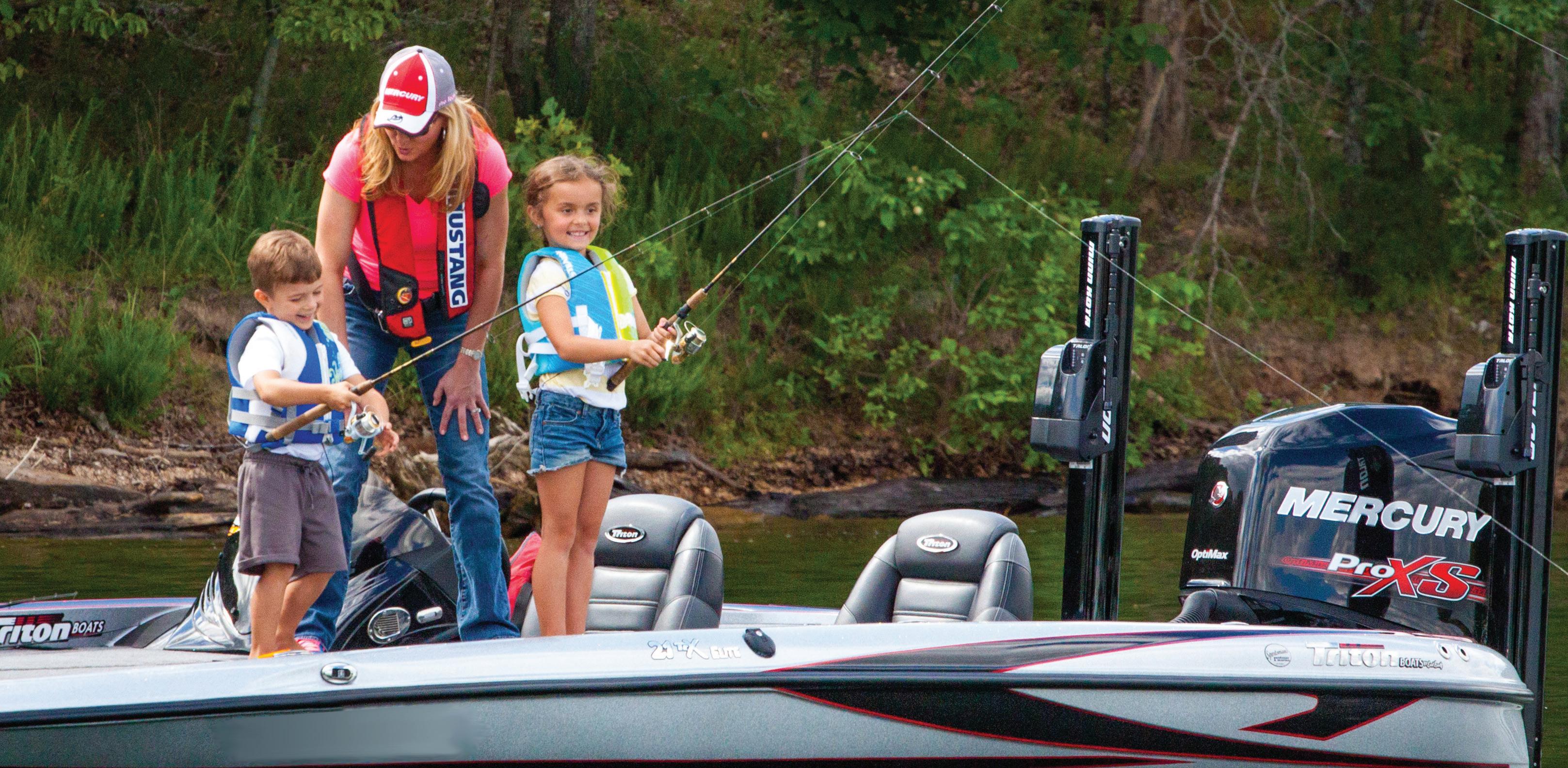








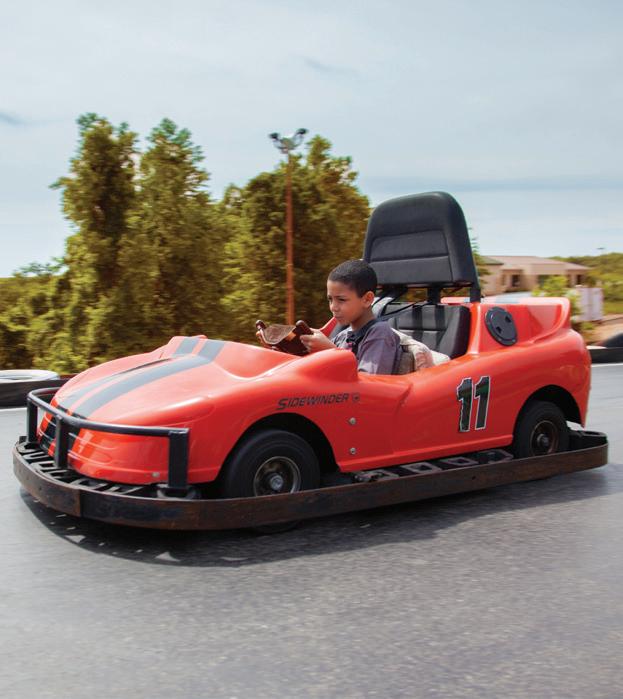
































 By BoatUS
By BoatUS



As the country continues to bake under record high temperatures, boaters often head to the water for respite. However, some may be unprepared for what it takes to withstand a high-heat day. Here are five tips from the nonprofit BoatUS Foundation for Boating Safety and Clean Water that can help ensure everyone’s safety as
temperatures climb.

• Create shade – Direct sunlight can make the air feel 10 to 15 degrees warmer, so reduce the time you spend in it. If you don’t have a cabin or Bimini top that offers sun protection, try wide-brimmed hats, loose fitting and moisture-wicking clothing (like a UPF-rated long-sleeve shirt) or fishing neck gaiters. Of course, reef-friendly sun block is a must for burn prevention.
• Bring extra water –Yeah, that’s a no-brainer. However, you’d be surprised how many boaters bring just enough water for a single day’s outing. Crew and guests may want to consume water like it’s out of a fire hose on super hot days! One good boating housekeeping tip: Keep a supply of bottled water in a locker or dry bilge area next to the hull, below the waterline. The water will stay cooler than the air
temperature, and it makes it easy to share – or restock your cooler.

• Stay cool safely – Of course, boaters can take advantage of the best way to stay cool – jump in! Just don’t jump off a moving vessel. Find a safe, out-of-the-way anchorage, drop the hook and enjoy!
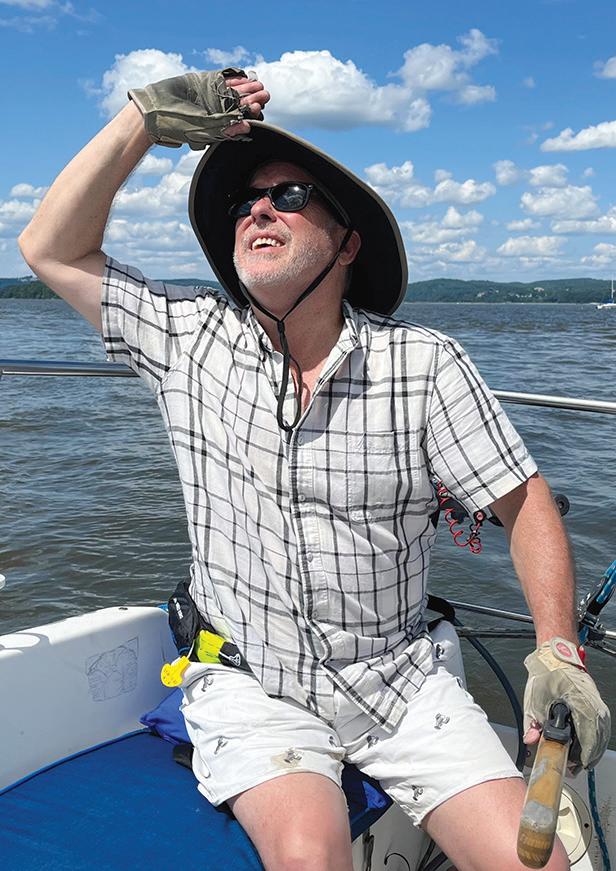
• Know signs of heatstroke – Heatstroke occurs when the body is unable to cool down. It can happen

With no end to scorching temps in sight, boaters must be prepared.


either gradually or suddenly. Telltale signs are heavy sweating, paleness, muscle cramps, tiredness, weakness, dizziness, headache, fainting, skin hot to the touch, nausea or vomiting. Infants and children are especially susceptible.
Immediately moving the victim to a cooler environment and providing fluids can help buy time for a heatstroke victim until you reach first responders.


• Have a way to communicate – If you have an unexpected breakdown or other issue, this is not the time of year to be stuck out on the water. Not only is the temperature a significant stressor, but atmospheric conditions, especially in
afternoon hours, can bring sudden and powerful storms. Ensure your VHF is operational, and bring your cell phone, keeping it dry and charged.
The BoatUS Foundation fo r Boating Safety and Clean Water is a national leader promoting safe, clean and responsible boating, funded primarily by donations from the nearly 800,000 members of Boat Owners Association of The United States (BoatUS). The Foundation provides educational outreach to boaters and anglers to reduce accidents and fatalities, improve stewardship of America’s waterways and make boating safe for all. Go online to BoatUS.org/Courses.
Public squirrel hunting opportunities are available through Sept. 15 at more than 30 private-land hunting sites enrolled in the Illinois Department of Natural Resources’ Illinois Recreational Access Program (IRAP).
The department has leased more than 4,400 acres of private land for 2023 squirrel hunting, creating more than 30 public access squirrel sites in 18 counties. Sites are available at no cost to participants.

Hunters simply must register, sign a liability waiver, and reserve a site through IRAP’s online registration system at https://dnr.illinois. gov/conservation/irap/irapregistration.html
Registered participants may add up to three additional registered hunters to their reservation for a group hunt. All hunters will receive a valid site permit that must be carried on their person and a windshield card that must be placed in their vehicle after reserving their site.

Youth hunters, 17 and younger, must be accompanied by an adult supervisor (a parent or a designee of their
parent who is at least 21). Both youth and their supervisors must register and reserve a site online. All hunters must have completed a department-approved hunter education course if they were born in 1980 or later, and they must have all appropriate permits as outlined in the most current version of the Illinois Digest of Hunting and Trapping Regulations.
Once hunters successfully reserve their site, they can download a site-specific permit to print and take with them on their hunt, along with directions and a map with coordinates.
For more information, go online to httpa://dnr.illinois. gov/conservation/irap/smallgame-hunting.html
The department says smallgame hunting is a great way to introduce young and first-time hunters to the activity because it teaches basic principles needed for other hunting activities.
Reconnecting families to the outdoors and providing opportunities for youth and first-time hunters to carry on hunting traditions are just a few of IRAP’s many goals.
IRAP has leased more than 27,000 acres of private land in 52 Illinois counties for a variety of semi-controlled hunting and fishing activities. IRAP is funded through a grant from the U.S. Department of Agriculture’s Natural Resources Conservation Service known as the Voluntary Public Access Habitat Incentive Program
(VPA-HIP).
Because of IRAP, more than 17,000 acres of habitat improvements have been implemented on private land, and thousands of outdoor recreationalists have had the chance to enjoy the outdoors.
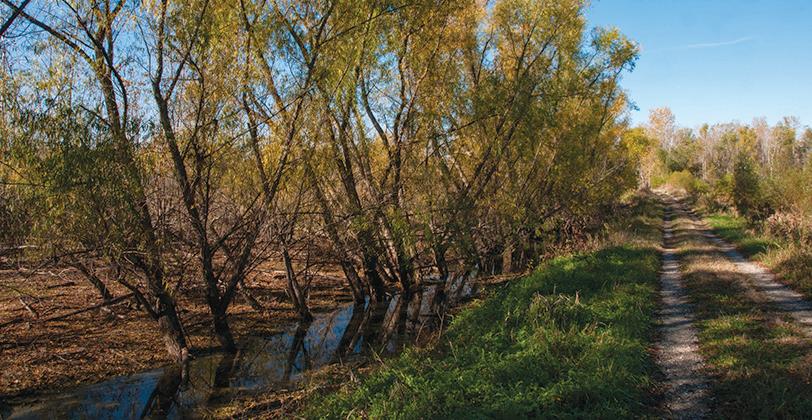

For more information, go online to DNR.IRAP@illinois.
gov
A free online program Sept. 9 will highlight hunting in southwestern Missouri. The Department of Conservation is offering the free program from 9 to 10 a.m. as part of a “Where Can I?” series by the staff of Shoal Creek Conservation and Education Center in Joplin. Staffer Tim Smith will discuss which public-use areas in southwest Missouri are good sites for hunting, where they are, what types of hunting are
17,000
Since its inception in 2011,




best suited to each area, plus regulations.
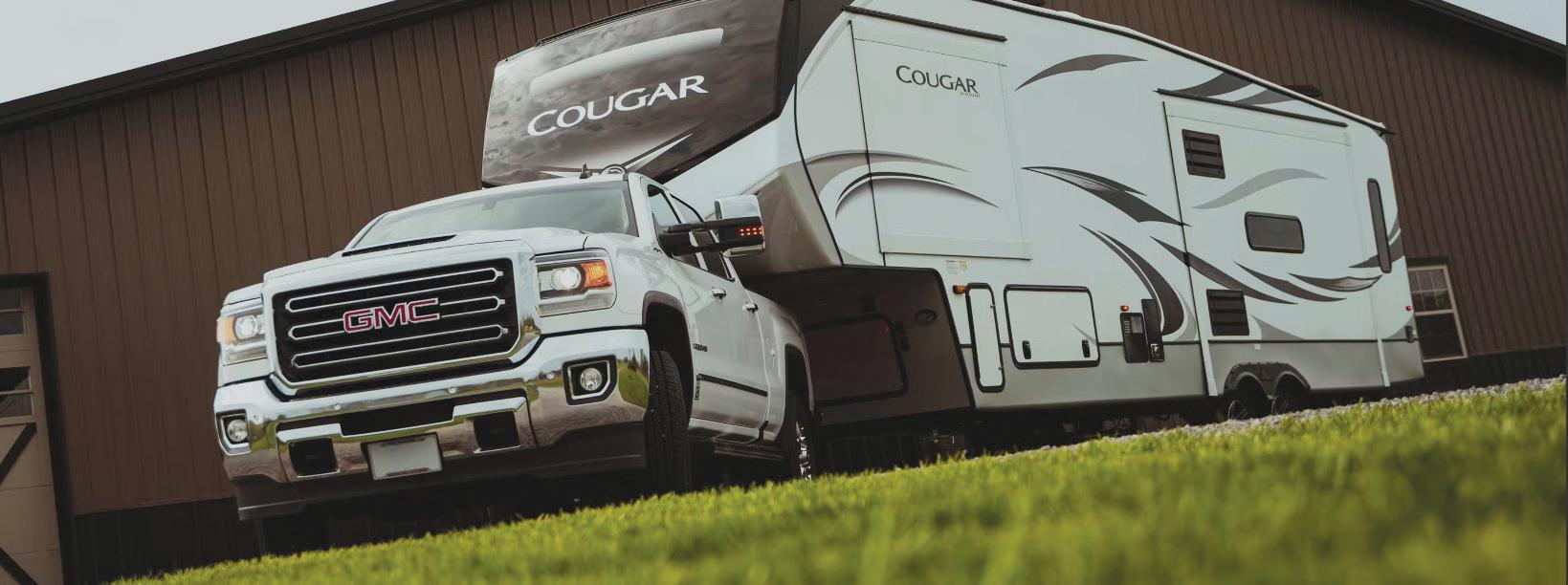
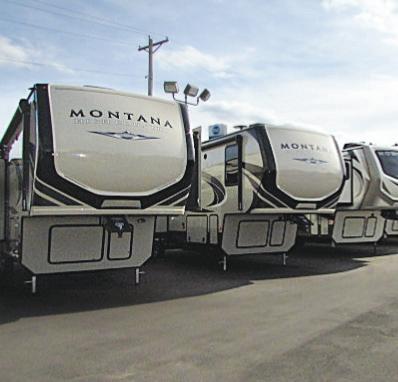
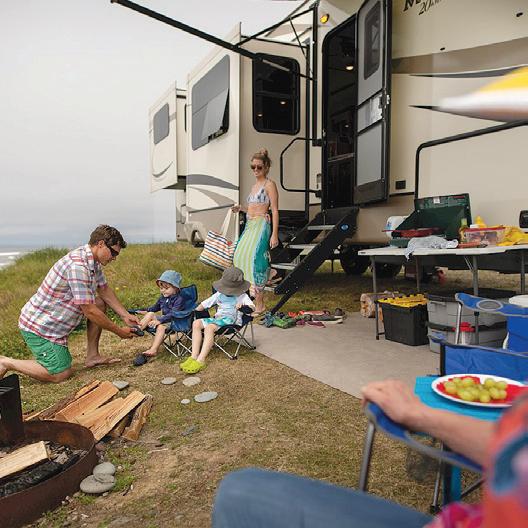
Register by going to https:// mdc-event-web.s3licensing.com/Event/EventDetails/194455
Provide an email address so a link can be sent. A question-answer session will be included. Sign up for text alerts by calling (417) 629-3434. The office is at 201 W. Riviera Drive, Joplin. For more programs, go online to mdc.moc.gov/events.

by
133 Old Springfield Rd., Bourbon, MO
Travel Trailers: Dutchmen Astoria, Gulf Stream Ameri-Lite, Gulf Stream Conquest, Gulf Stream Conquest
SE, Gulf Stream Conquest Lite, Gulf Stream Vintage Cruiser, KZ Connect, KZ Connect SE, KZ Escape, KZ Escape HATCH, KZ Sportsmen, KZ Sportsmen SE, KZ Sportsmen Classic, Riverside RV Intrepid, Riverside RV Retro, Venture RV Sonic, Venture RV Sonic X, Venture RV Sonic Lite, Venture RV SportTrek, Venture RV
SportTrek Touring, Venture RV Stratus
Fifth-Wheels: CrossRoads RV Cameo, Dutchmen Astoria, Heartland Big Country, Heartland ElkRidge, KZ Sportsmen
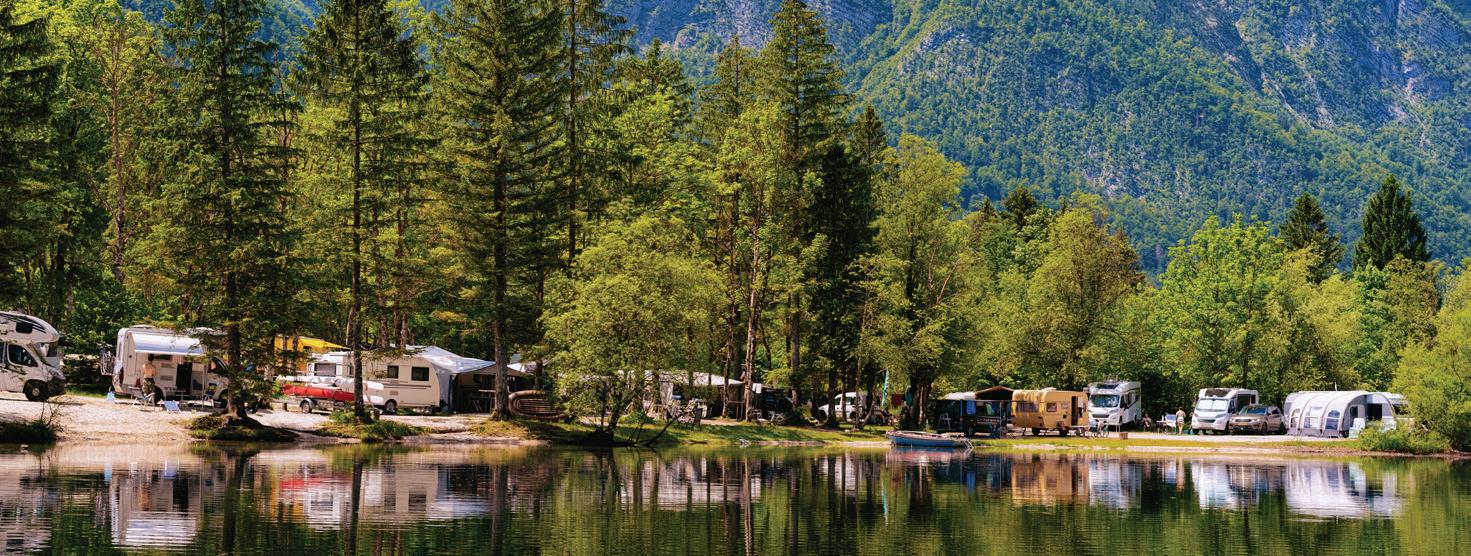
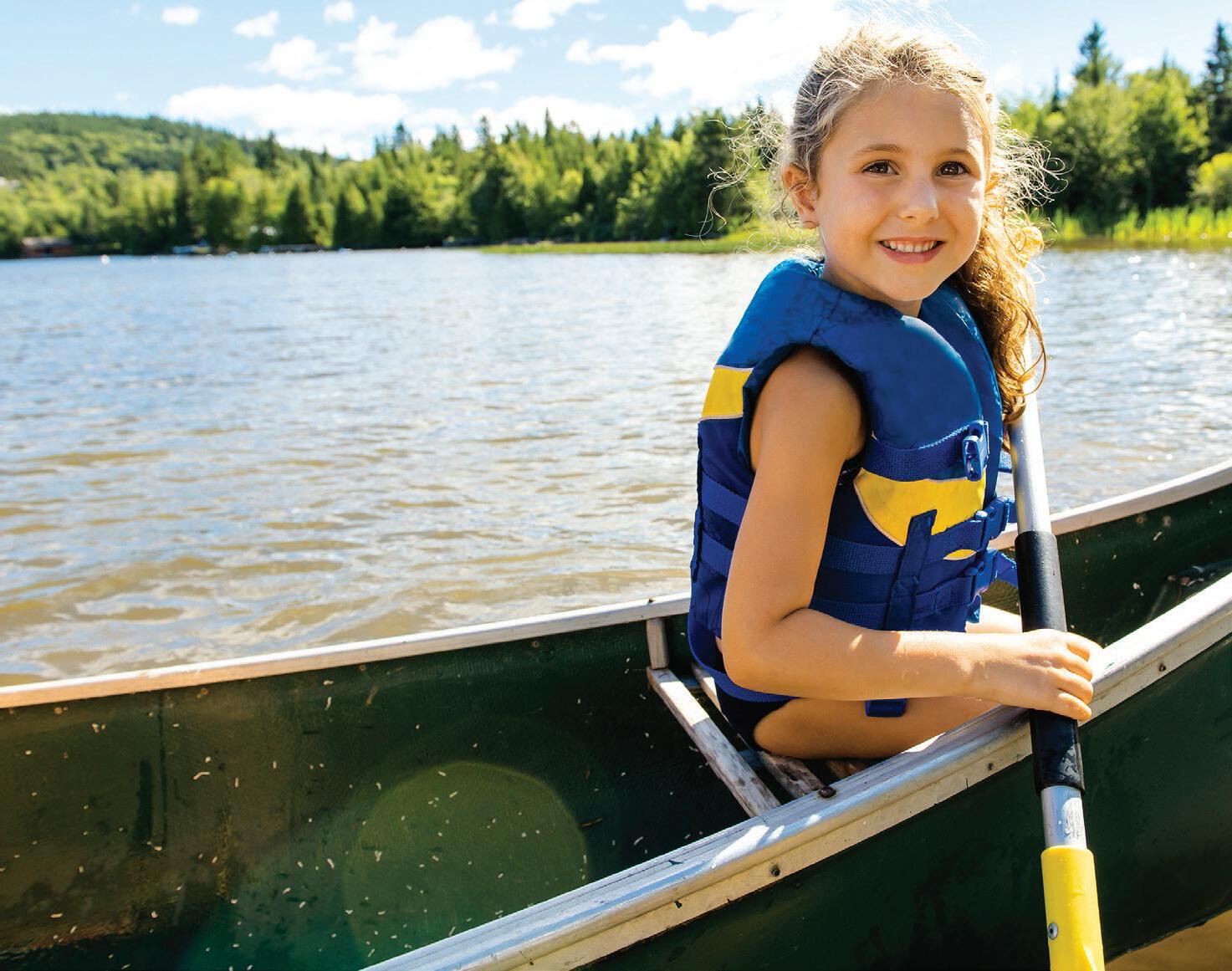
295 E 5th St., Eureka, MO
Class A Diesel: Tiffin Allegro Bus, Phaeton, Allegro Red, Allegro Breeze; Thor Palazzo, Tuscany, Aria, Venetian
Class A Gas Motorhomes: Tiffin Allegro Open Road; Thor ACE, Vegas, Windsport, Challenger, Indigo; Winnebago Vista, Adventurer
Class B Motorhomes: Winnebago Revel; Thor Sequence, Scope, Sanctuary, Dazzle
Class C Gas Motorhomes: Thor Four Winds, Gemini; East to West Entrada; Winnebago Minnie Winnie
Class C Sprinter Motorhomes: Thor Delano; Tiffin Wayfarer; Winnebago View
Super C Diesel Motorhomes: Thor Omni, Pasadena
Sport Utility RVs: Alliance Valor; Forest River Vengeance Rogue, Rogue Armored, Wildwood FSX; Thor Outlaw Class A, Outlaw Class C
Travel Trailers: Keystone Passport, Hideout, Sprinter; Forest River Wildwood, FSX, R-Pod, No Boundaries; East to West Della Terra; Alliance Delta
9001 Dunn Rd., Hazelwood, MO
Class A Diesel Motorhomes: Fleetwood Discovery, Fleetwood Discovery LXE, Fleetwood Frontier, Fleetwood Pace Arrow
Class A Gas Motorhomes: Jayco Alante, Jayco Precept, Fleetwood Fortis, Fleetwood Flex, Fleetwood Bounder
Class C: Jayco Redhawk, Jayco Greyhawk, Jayco Melbourne
Super C Diesel: Jayco Seneca
Class B Motorhomes: Jayco Swift, Jayco Terrain 4X4
Travel Trailers: Jayco Jay Flight, Jayco Jay Feather Micro, Jayco Jay Feather, Jayco White Hawk, Jayco
Eagle HT, Jayco Eagle, Keystone Crossfire, Keystone Bullet, Keystone Premier
Fifth Wheels: Jayco Eagle HT, Jayco Eagle, Jayco North Point, Jayco Pinnacle
Sport Utility Trailers: Jayco Jay Flight
Sport Utility Fifth Wheels: Jayco Seismic, Jayco Seismic Luxury

101 Thomas RV Way, Wentzville, MO
Travel Trailers: All Airstream including Basecamp. Lance, Grand Design: Transcend, Imagine, Reflection.
Ember: Micro, Overland, Tandem, Touring. Forest River: Ibex Teardrop Trailers by NuCamp: TAB, TAG
Sport Utility Trailers: Grand Design Momentum trailers and 5th wheels, IBEX travel trailer
Fifth Wheels: Grand Design: Reflection, Solitude. Forest River: Impression
Truck Campers: Lance
Camping Vans by Airstream: Interstate 19, 24, Atlas, Rangeline
Fifth Wheels: Coachmen Chaparral, Brookstone; Alliance Paradigm, Avenue; Keystone Sprinter
FRIDAY & SATURDAY 10am - 8pm SUNDAY 10am - 5pm
$20
10 East Woodlawn Dr., Leadington, MO
Travel Trailers: Cruiser RV Shadow Cruiser, Cruiser RV Avenir, Palomino SolAire Hybred
Toy Haulers: Cruiser RV Stryker
Fifth Wheels: Sierra, East to West Tandara, East to West Ahara, Cruiser RV Essencer
Truck Campers: Palomino Real-Lite
Destination Trailers: Salem Villa, Salem Grand Villa
3100 Telegraph Rd., St. Louis, MO
2 Fun St., Hartford, IL
Travel Trailers: Palomino Puma, Palomino Puma XLE, Palomino Puma Ultra-Lite, Palomino Puma

Destination, Forest River Surveyor, Forest River Salem, Forest River Salem Cruise Lite, Forest River Salem

FSX, Forest River Salem Villa Destination, Forest River Salem Hemisphere, Forest River Flagstaff Classic
Super Lite, Forest River Flagstaff Super Lite, Forest River Flagstaff Micro-Lite, Forest River Shamrock, Forest River E-Pro, Forest River Sandpiper Destination, Primetime Avenger, Gulfstream Ameri-Lite, Gulfstream Innsbruck, Gulfstream Envision, Gulfstream Vintage Cruiser, Gulfstream Vista Cruiser
Sport Utility Trailers: Palomino Puma Unleashed, Palomino Puma XLE, Forest River Salem FSX
Fifth-Wheels: Palomino Puma, Forest River Sandpiper, Forest River Salem Hemisphere, Forest River Salem Hemisphere Elite, Forest River Flagstaff Classic Super Lite, Forest River Super Lite
Folding Campers: Forest River Flagstaff
26 Dream Hollow, Troy, MO
Sport Utility Trailers: Cherokee, Grey Wolf, Wolf Pack
Travel Trailers: Grey Wolf, Harbor View Destination, Hy-Line, Wolf Pup, Cherokee, KZ Connect, KZ Escape, StarCraft Autumn Ridge, StarCraft SuperLite, Timber Wolf Destination, Bushwhacker, Bushwhacker Plus
Fifth-Wheels: Sabre, Starcraft GSL
6200 Heimos Industrial Pkwy., St. Louis, MO
Class A Diesel: Sportscoach by Coachmen
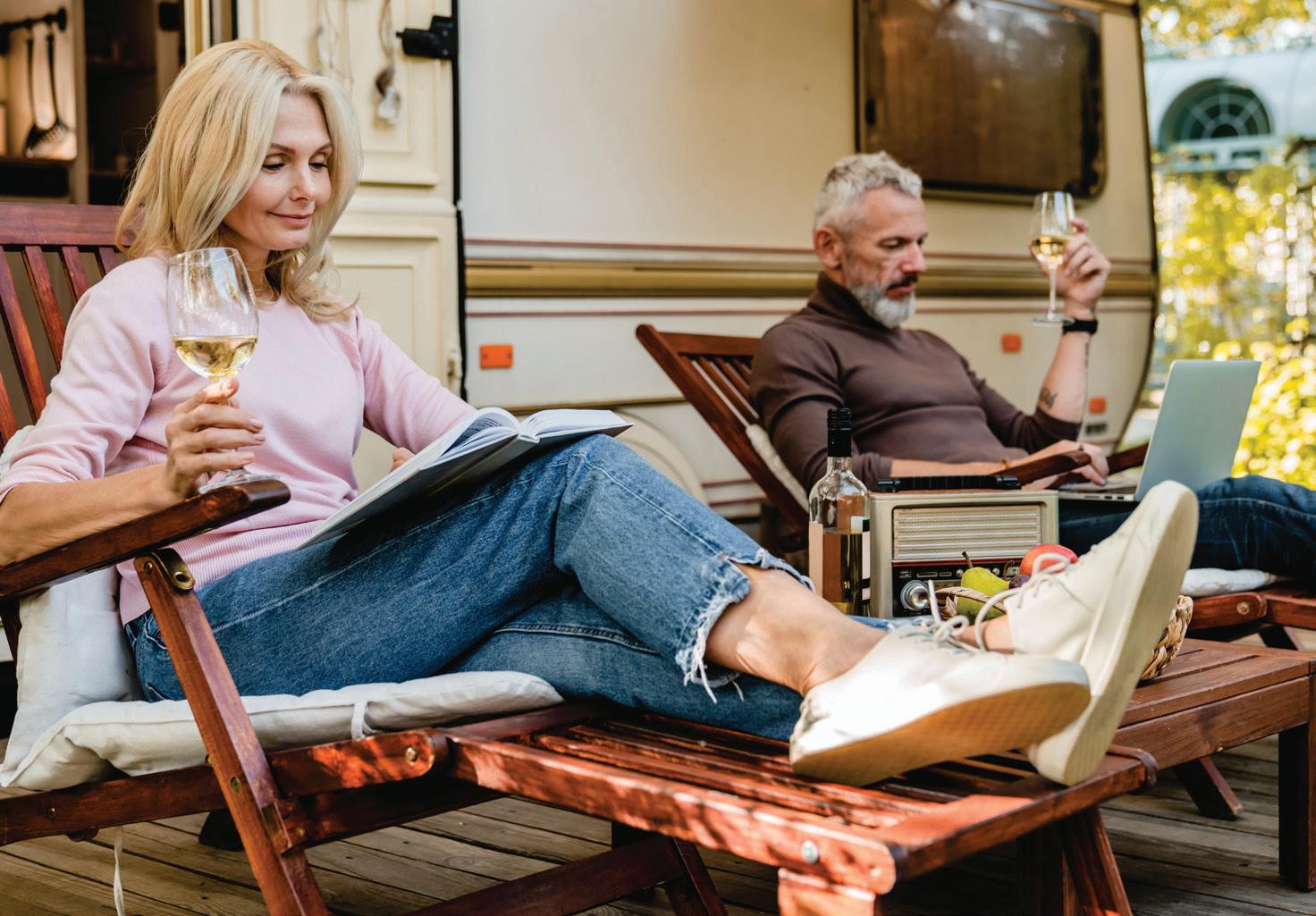
Class A: Coachmen Mirada, Coachmen Encore, Coachmen Pursuit

Class C: Coachmen Leprechaun, Coachmen Freelander, Coachmen Cross Trail, Coachmen Prism
Sport Utility Trailers: Coachmen Trail Blazer, Clipper V-Trec, XLR Hyperlight, XLR Boost, XLR Micro Boost
Sport Utility Fifth Wheels: Keystone Raptor, Keystone Carbon, XLR Boost, XLR Nitro
Travel Trailers: Coachmen Freedom Express, Coachmen Freedom Express Liberty, Coachmen Apex, Coachmen Apex Nano, Coachmen Northern Spirt, Coachmen Northern Spirit XTR, Coachmen Clipper, Coachmen Catalina Legacy, Coachmen Catalina Summit, Dutchmen Aspen Trail, Dutchmen Aspen Trail LE, Keystone Cougar HT
Fifth Wheels: Keystone Cougar, Keystone Cougar HT, Keystone Cougar Sport, Keystone Montana High Country, Keystone Montana, Keystone Montana Legacy
Folding Campers: Coachmen Clipper, Coachmen V-Trec, Coachmen Clipper Express, Coachmen Viking, Coachmen Viking Express
Class B Diesel: Coachmen Galleria & Galleria 4x4, Storyteller Overland Mode 4x4, Stealth 4x4 & Beast 4x4, Winnebago Adventure Wagon, Thor Tranquility, Midwest Automotive Designs Passage, Roadtrek Agile SS, Agile SS 4x4
Class B Gas: Chinook Bayside & Bayside AWD, Winnebago Solis Pocket, Solis 59P, Solis 59PX, Thor Rize 18M & 18T, Tellaro 20L, 20K, 20J, & 20A, Coachmen Nova & Beyond, Midwest Automotive Designs
Legend, Winnebago Roam, Roadtrek Zion, Zion SRT, Play, Chase, Pivot
Class B+/C: Diesel: Leisure Travel Vans Unity RL, TB, MB, FX, Renegade Vienna FWS & MBS, Chinook Summit, Dynamax Isata 3, Winnebago Navion, Thor Tiburon
Class B+/C: Gas: Leisure Travel Wonder RL, RTB, FTB, Thor Compass, Winnebago Ekko, Chinook Maverick
Super C’s: Renegade Valencia, Verona, Verona LE, Explorer, XL, Dynamax Isata 5, DX3, Dynaquest XL
Trailers: Intech Flyer Pursue, Explorer, Discover, SOL Horizon, Dawn, Eclipse, Terra

Here we are in September, and hunting season is just around the corner. But unless you like to eat rodents – squirrels that is – you have only one other choice of game to pursue; mourning doves.
They may not look like much, perched up there on the telephone wires, but mourning doves have a lot to offer a wing shooter. First of all, here are a lot of them. US Fish and Wildlife
Service biologists estimate their population nationwide to be around 70 million. With that many of the speedy gray targets flying around, liberal daily limits are set at 15 doves per day.
The 15-bird daily limit makes for a lot of shooting, when you consider researchers found hunters fire eight to nine shots to kill just one dove. Now, that doesn’t mean it takes eight shots to kill a dove, it means there are a lot of shooters out there who can’t tell if the bird is within range, or if he just can’t hit his own behind with both hands, or a combination of the two. In either case, the
hunter who takes pot shots at high-speed targets at ranges exceeding 30 yards is bound to waste a considerable amount of ammunition.
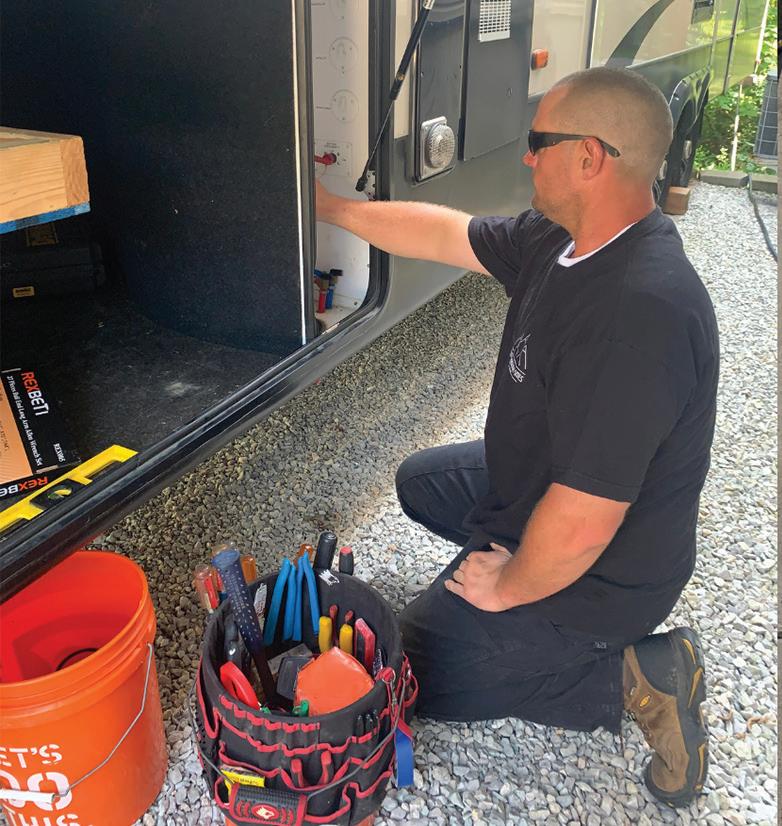
So one of the primary secrets to successful mourning dove shooting is to wait for the close-in, easy shots. Long distance shots will usually miss or produce lightly hit cripples that will walk off and never be seen again.
A famous old Southern Illinois goose hunter once told me that to be successful, a hunter had to “Get where the goose wants to be, and wait there.” This same tactic will work with mourning doves. The trick is figuring out where the doves want to be, and to do this, you need to know what their daily patterns are.
Doves don’t like to get up early. They normally stay in their roosts until full daylight allows them to see everything on the ground, and then they will start flying out in small flocks to feed in the same field they fed in the day before. By
A good start on a 15-dove limit. Eight birds or more are needed for dinner for two.
mid-morning, the birds will have flown to water and then back to their roost, usually a stand of evergreen trees, where they spend the hottest part of the day.
Later in the afternoon, around 4 p.m., the birds will return to their feeding fields, and this flight will often be more concentrated than the morning flight and therefore more productive. Early in the evening they will go to water, then home to their roost for the night.
Doves are creatures of habit. They will take in grit, enter a feeding field, and go to water in the same way day after day,
until conditions change, or they move along their migratory route south.
Your best bet is to scout your dove field and learn what part of that field they actually are feeding in, and where they enter and leave the field. Set up along their flight path, and they will come right to you.
You can also set up on the birds’ watering site. Just remember that doves like shallow water in an open area with good visibility all around. Actually, puddles in gravel roads are per-



fect. Running water or weedy areas are not. Gravel pits are dove magnets. You can set up to shoot doves as they return to their roost, but understand that once the birds are shot at near the roost, they will probably find a different roosting place. You are probably better off not disturbing the roost if you intend to hunt that area again.
• Wear a camo shirt and hat. A little face camo on your cheeks couldn’t hurt.
• Sit down, quietly. Don’t try to hunt standing up, don’t point at incoming birds, don’t shout to your buddies to alert them to doves. The doves will flare every time.
• Don’t take long range shots. Misses, lost cripples, and way too much time spent out in the open are the result. Wait for easy, close in opportunities.

• A .20 gauge shotgun, bored-modified, with no.8 low brass shells is all you need.
• Bring plastic grocery store bags to keep the flies from congregating on your dead birds.
• Bring plenty – plenty of

water and snacks and a least three boxes of ammo.
• Do your dog a favor and leave it home. The conditions in a dove field are brutal for a dog and could kill it.

Here is my favorite mourning dove recipe:
• Remove breasts from 8 to 10 doves.
• Lightly sauté, in 1 tbsp. of oil, a cup each of chopped onions and sliced mushrooms and remove from pan.
• Toast half a cup of slivered almonds, then remove from pan.
• Cut dove breasts in half, dredge in flour, and brown lightly in 1 tbsp. of oil.
• Add 2 cups beef broth to dove breasts plus enough flour to thicken the sauce. Then simmer the doves until just cooked through. Add a dash of Madeira wine.
• Return onions, mushrooms, and almonds to pan, and simmer for about five minutes.
• Serve over rice. Yum, yum!
The 2023-2024 Illinois Digest of Hunting and Trapping Regulations is now available online at https://Illinois.gov/ hunting/huntingtrapdigest. html.

The digest will also be made available in Spanish and Polish online, and printed copies will soon arrive at vendor locations statewide.
“IDNR is pleased to make this informative digest available to hunters and trappers, who are essential partners in conservation and management of Illinois’ wildlife,” IDNR Director Natalie Phelps Finnie said. “This annual guide provides a detailed review of hunting and trapping season dates, possession limits, hunting zone boundaries, statewide hunting regulations, license and permit details, and other useful information.”
Hunting licenses can be purchased through IDNR’s online license portal at https:// exploremoreil.com or at participating vendors. For a list of vendors, go to https://exploremoreil.com/agentlocator.
The following late-summer and fall hunting opportunities are available in Illinois:
Statewide through Feb. 15 except for Nov. 17-19 and Nov. 30-Dec. 3 in counties open for firearm deer hunting. Daily limit, 5. Possession limit, 10.
DOVE
Statewide, mourning and
white-winged, through Nov. 14 and also from Dec. 26 to Jan. 9. Daily limit, 15. Possession limit, 45.
TEAL
Statewide Sept. 9-24; daily limit 6, possession limit 18.
RAIL
Sora and Virginia only, Sept. 9-Nov. 17 statewide. Daily limit 25; possession limit 75.
SNIPE
Wilson’s snipe, Sept. 9-Dec. 24 statewide, daily limit 8, possession limit 24.
In north and central zones, Sept. 1-15, daily limit 5, possession limit 15.
In south central and south zones, daily limit 2, possession limit 6.
“Zone” refers to waterfowl hunting zones established in Illinois according to U.S. Fish and Wildlife Service regulations.
For more details and a map of waterfowl zones and season dates through 2025, go online to https://bit.ly/ ILwaterfowlzones.
Illinois has set deer archery hunting season dates for 2023 and 2024.
In Cook, DuPage and Lake counties, and that portion of Kane County east of State Rte. 47, the season is Oct. 1 through Jan. 14, 2024.
In all other counties and that portion of Kane County west of State Rte. 47, the season is Oct. 1 through Jan. 14 except that archery season is closed during the firearm seasons, Nov. 17-19 and Nov. 30-Dec. 3.
For non-residents, last June was the time to purchase combination deer archery permits,
for either sex and antlerless. But until Jan. 14, 2024, permits may be purchased over the counter from a licensed vendor, including the Combination Deer Archery Permit or the Single Deer Archery Antlerless-only permit.
Non-residents may apply for and receive a maximum of one Nonresident Combination Archery Deer permit during a license year. Applying for and receiving the Nonresident Landowner archery Deer permit does not preclude the recipient from also applying for and receiving the regu-
lar Nonresident Combination Archery Deer permit.
Non-residents may not purchase a Combination Archery Deer permit after Sept. 30 if they have previously purchased any Single Antlerless-Only Archery Deer permit for the current deer season.
For Illinois residents, the period to purchase archery deer permits ended Sept. 1. But until Jan. 14, 2024, residents may purchase Combination Deer Archery or Antlerless permits over the counter from a licensed vendor.
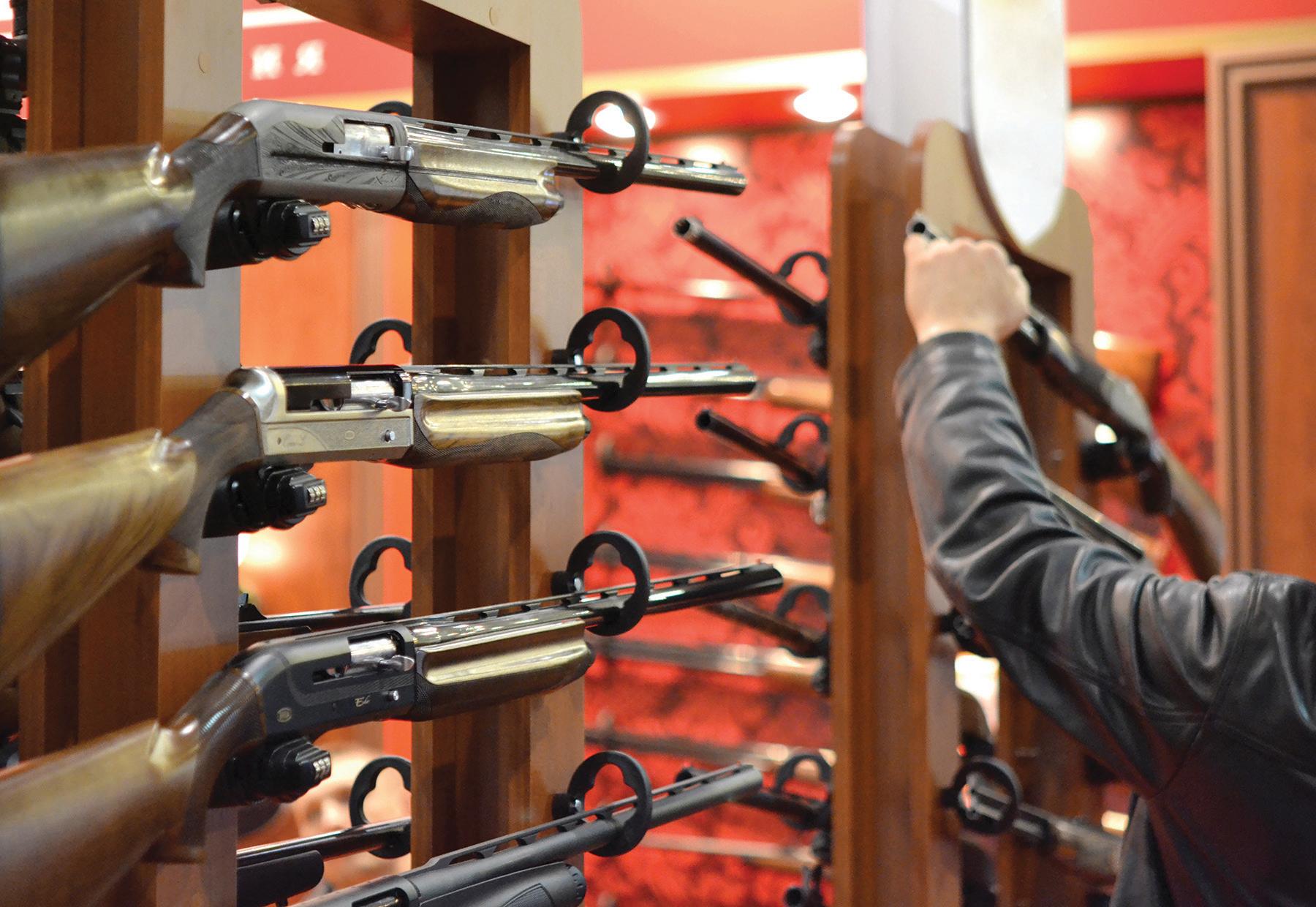
Deer hunters will have more ways to hunt in Minnesota this fall, and deer hunting licenses can be purchased starting Aug. 1.
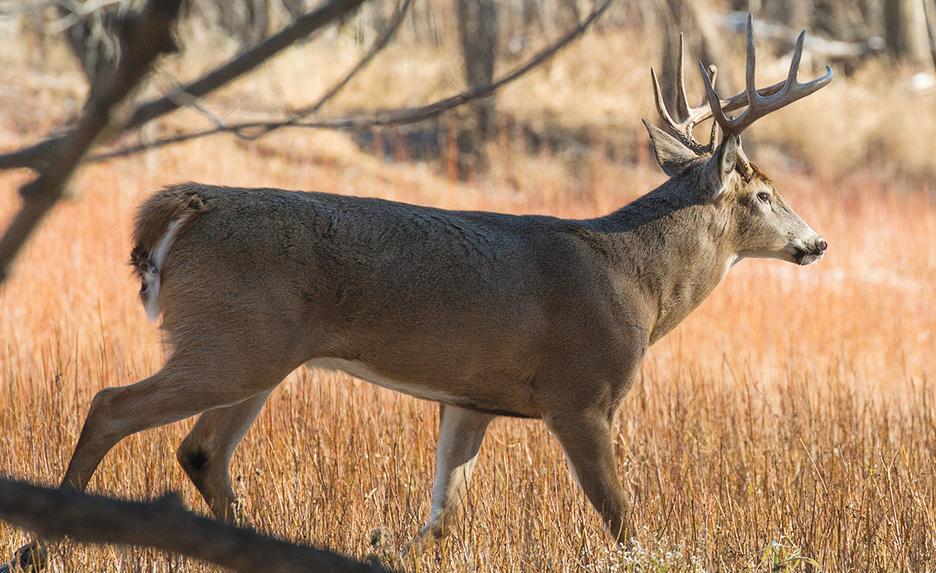
“We’re excited for deer season. Hunters have a lot to look forward to this year,” said Barb Keller, big game program leader. “We encourage all hunters to review the new hunting regulations and make a plan for hunting success.”
New this year:

• Crossbows are allowed for all deer hunters with an archery license.



• Synthetic ground blinds on public lands are required to have blaze orange covering.
• Some chronic wasting disease zones have changed.
• Non-toxic ammunition will be required for special hunts in state parks or in scientific and natural areas where hunting is allowed.

• Some harvest limits are reduced in northeast and north-central Minnesota, while most areas have similar bag limits as last year.
Deer hunting specifics can be found on online at mndr. gov/regulations/hunting.

Electronic copies of all 2023 Minnesota hunting regulations are available at mndnr. gov/regulations/hunting.
Printed copies will be available by the end of August wherever licenses are sold.
After a tough winter, deer hunters in northern Minnesota might see fewer deer. In central and southern Minnesota,
deer likely fared well.
“Hunters in most of Minnesota can expect a season similar to last year in terms of how many deer they can harvest,” Keller said. “The lower bag limits in northeast and north-central Minnesota aim to allow deer populations to recover after back-to-back severe winters. Deer are resilient and we are hopeful deer populations there will gradually recover along with lower harvests, especially if we get some mild winters.”
Minnesota increased the bag limit or lottery permits in 12 Deer Permit Areas (DPA) this year, while 80 such areas have the same designation as last year, and 38 have reduced bag limits or lottery permits. More information about specific DPA bag limits and other season information is available at mndnr.gov/ hunting/deer.
The crossbow change allows all hunters who purchase an archery deer license to take deer with a crossbow throughout the archery deer season. Previously, only hunters 60 or older, individuals with a disability who had a valid permit, or hunters with valid firearms hunting licenses during the firearms season could use crossbows. Hunters will be asked whether they harvested their deer with a crossbow or vertical bow when they register their deer.
The change on ground blinds requires that fabric or synthetic blinds on public



land must have a blaze orange safety covering on top of the blind that is visible from all directions, or a patch made of blaze orange that is at least 144 square inches (12x12 inches) on each side of the blind.

It’s important for hunters to get their deer tested in CWD zones. This year, some Deer Permit Areas were added to the CWD zones list and some were removed. Hunters should check the requirements and available sampling options for where they hunt. Hunters can find this information at mndnr. gov/deerhunt.
Hunters are required to have their deer 1 year or older sampled for CWD in all CWD management and surveillance zones during the opening weekend of the firearms A season, Nov. 4-5. In all areas outside CWD management and surveillance zones, hunters will have other options to get their deer sampled for CWD. Go to mndnr.gov/cwd for more information about sampling locations or to request a mail-in sampling kit.
• Archery: Saturday, Sept. 16, through Sunday, Dec. 31.
• Youth and early antlerless: Thursday, Oct. 19, through Sunday, Oct. 22.
• Firearms: Saturday, Nov. 4, with closing dates depending on a hunter’s location.
• Muzzleloader: Saturday, Nov. 25, through Sunday, Dec. 10.











• Late CWD hunt: Dec.15-17.

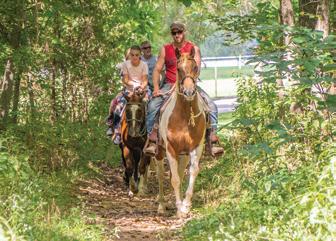

 By BoatUS
By BoatUS
Summer boating season has been in full swing and you’ve been enjoying your time on the water. Has it all been good so far?
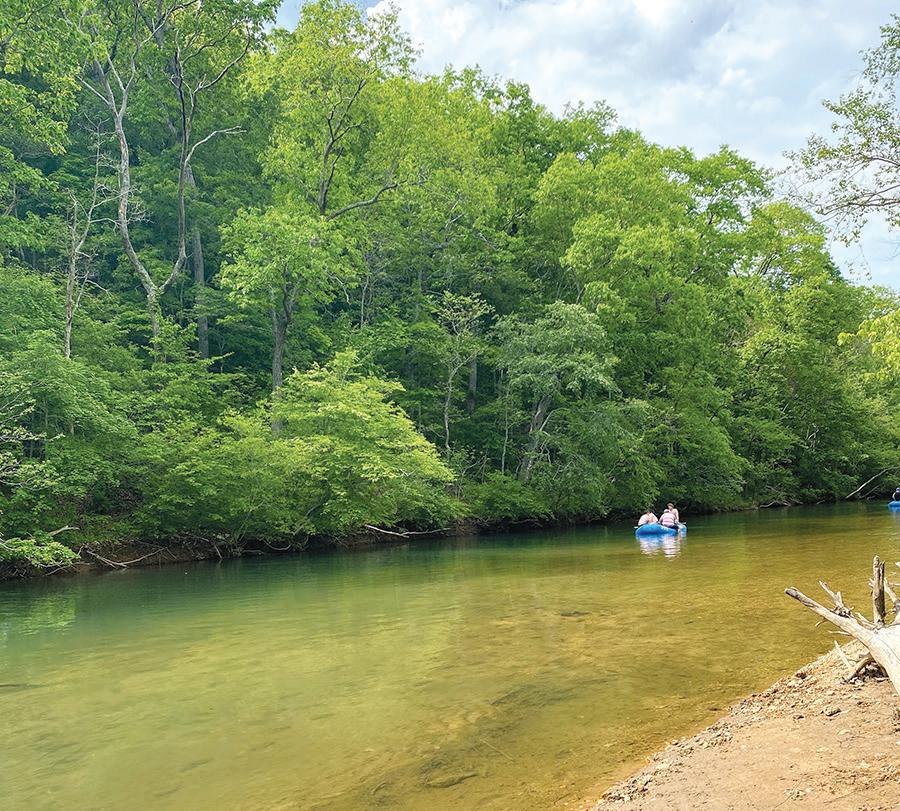

Maybe you’ve found yourself in a situation where, perhaps, you felt less than confident behind the wheel, or simply got a sense that something didn’t feel safe.
The BoatUS Foundation for Boating Safety and Clean Water has the fix for that. Taking a free online boating safety course can make you feel good behind the helm – prepared, more confident, and able to handle situations that arise.
If that’s not a good enough reason, the U.S. Coast Guard reports that 74 percent of boating fatalities occur on boats where the boat operator did not have boating safety instruction.
Recognized by the U.S. Coast Guard and approved by the National Association of State Boating Law Administrators (NASBLA) for 36 state boating license agencies, the Foundation’s free boating safety course allows you to start and stop at any time, fitting into your busy schedule.
When completed, you may print your state’s boating safety
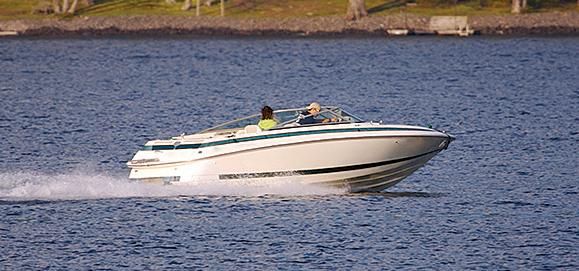

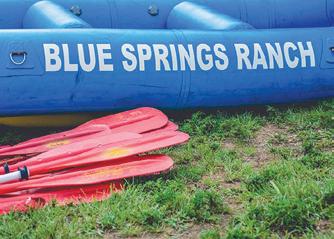


education certificate. More than 2.3 million boaters have taken the course since it was first offered in 1997.
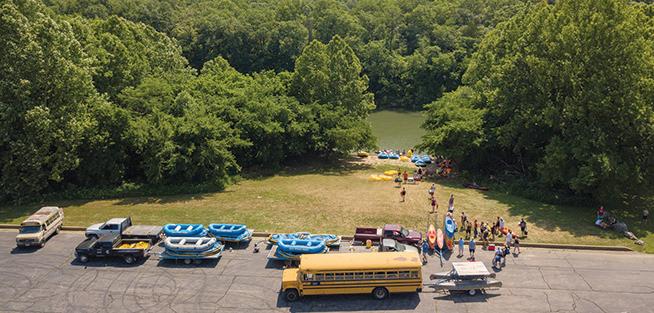
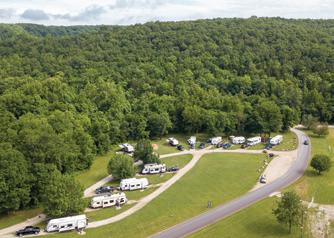


“Whether you’re new to boating or experienced doesn’t matter,” said Ted Sensenbrenner, BoatUS Foundation director of boating safety.
“Everyone stands to gain by taking a boating safety education course – including all of the boaters who share waters with you.”

The BoatUS Foundation Boating Safety Course covers state and federal regulations on how to operate your boat safe-
ly and legally. This includes rules of the road including navigation, boating etiquette, waterway traffic and common boating hazards, trip planning, communication, required safety equipment including the importance of life jackets, safe refueling, environmental considerations, basic maintenance and more. Animations, videos and knowledge assessments ensure you get the most out of the course.
To take your state’s course, go to BoatUS.org/Free . A range of safe and clean boating courses – including the nation’s largest free online boating safety course – can be found at BoatUS.org/Courses.
The BoatUS Foundation for Boating Safety and Clean Water is a national leader promoting safe, clean and responsible boating. Funded primarily by donations from the nearly 800,000 members of Boat Owners Association of the United States (BoatUS), the nonprofit provides innovative educational outreach directly to boaters and anglers with the aim of reducing accidents and fatalities, increasing stewardship of America’s waterways and keeping boating safe for all. A range of safe and clean boating courses – including the nation’s largest free online boating safety course – can be found at BoatUS.org/Courses.
Extending your summer camping to the shorter, colder days of autumn can be as easy as modifying your gear – and skills – to extend your comfort zone to make a comfortable and inexpensive transition into winter camping.
Simply supplementing summer gear with existing items can enable you to adapt your clothing and other camping needs to the cooler temperatures and longer nights. Here are some changes that you can make to make your fall/winter camping experience more comfortable and enjoyable.
• CLOTHING – The importance of layering your clothing remains the same. You’ll want to wear a thicker base layer, one that wicks away perspiration to keep you dryer and warmer as the weather cools. Mid layers provide insulating warmth while the outermost layer protects against the elements. It’s best to start out the day with all your layers (fleece, wool, synthetics only) in place and remove layers accordingly as you warm through exertion or rising air temperatures.

• TENT SHELTER – A wellmade and designed three-season tent is usually preferred for use as a cooler weather shelter. Key components include a tent fly and vents to help circulate air and to remove excess moisture from within the tent. A good ground cloth inside the tent, large enough to extend the edges about 6 inches up the inside walls, will help prevent any ground moisture from dampening your tent floor.
• LESS MOISTURE – Keep moisture in your tent to a minimum with these tips. Keep wet or damp boots and outer clothing outside the main tent area or stow them in a sealed bag; if you cook or boil water on a stove in the vestibule, make sure the area is well ventilated so steamy air doesn’t drift inside. Sleep with your head outside of the sleeping bag, as breath moisture can dampen the inside of your bag.

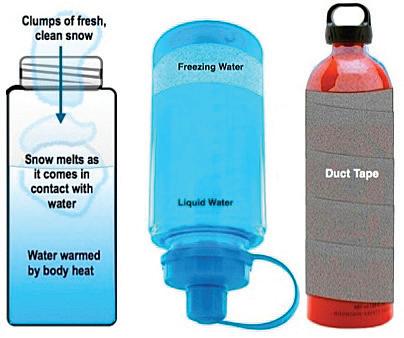
• SLEEPING BAG – A most significant adaptation for enjoying a warm, cozy cool-season camping experience is added warmth from your sleeping bag and any pads. A typical summer-rated sleeping bag should keep you comfortable down to about 40 degree Fahrenheit; “Three Season” bags are usually rated down to about 20 degrees. Most often, simply adding a bag liner (flannel, fleece, wool, synthetic) to your sleeping bag can increase its warming capabilities by about 10 degrees. Wearing a heavier base layer of sleeping clothing can add even more
warmth. These two simple modifications can turn your “summer” bag into adequately warm and comfortable sleep on cooler weather nights.

• SLEEPING PADS – These can provide insulation and comfort. The cold from the ground and the air surrounding your bag can steal your body’s warmth. Air mattresses, while providing cushioning, also cool from the ambient air. The density of a closed-cell sleeping pad keeps you warmer but provides less cushioning. A happy median is to use both – an air mattress base for comfort against a rough, hard surface, coupled with a closed-cell pad directly below your sleeping bag to insulate you from the cooler air. Combined, they form a comfortable and warming platform upon which to sleep.
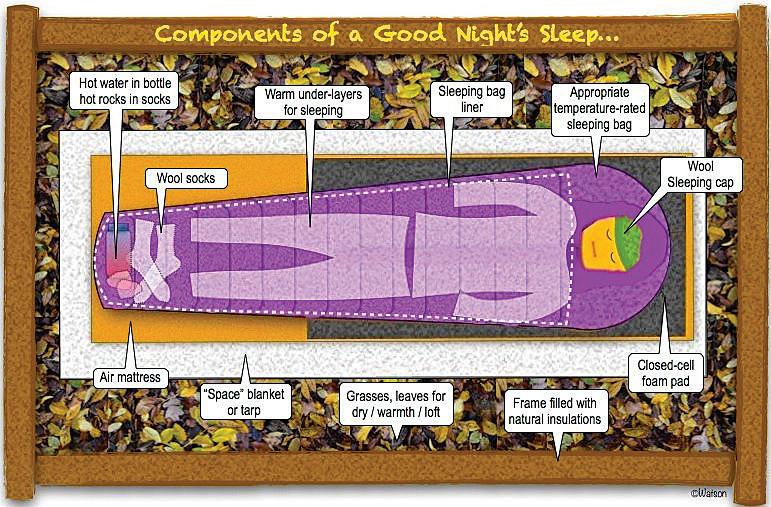
• COOKING – Even if you are not a “winter” camper, modifying your current summer gear just slightly will enable you to enjoy a much longer yet comfortable and cozy camping season.
Cooking in colder weather can be a challenge, but a few tricks can make every meal more rib-stickingly warm. First and foremost, use a long-burning, ember-generating hardwood (maple, ash, hickory, oak) as your primary heat source. Consider a large fire ring that you can section off – a main fire area produces
hot cooking embers, another section rakes slow-burning coals together under a grill for your “cooking” fire, and a third area off to the side serves as a warming or baking area.

One-pot meals (stews, hardy soups) can be easily prepared and casually attended. Sauces can be frozen at home and kept in the cooler until needed. Also consider using bowls for all meals (they retain heat better than plates do). Likewise, wooden/plastic utensils don’t suck the heat from food like metal ones can. Cool-weather meals should be about 50 percent carbohydrates, 30 percent fat and 20 percent protein. If you are worried about foods freezing, use your cooler to keep things from freezing over colder nights as well.
• HYDRATION – Don’t for-
get to drink plenty of water – dehydration occurs in winter, too. To keep a water bottle nozzle or opening from freezing, store it inverted, as water freezes from the top down. Melted snow can be a good emergency source of water, but be sure to purify the melt water anyway – even freshly fallen crystals can have contaminants in them.
Most of these cold-weather
tips are just extensions of general camping procedures used year-round, modified to utilize their strongest features as camping conditions dictate. As you grow more knowledgeable and confident, you’ll probably notice your camping season expanding as a more comfortable and familiar pace as well. Be comfortable, be safe and have fun out there!

Children can fish for bluegill and learn how to cast a line at Conservation Village, sponsored by the Illinois Department of Natural Resources (IDNR) at the 2023 Du Quoin State Fair Aug. 25-Sept. 4.

Kids can try for hybrid bluegill from a 5,000-gallon tank and staff will host kids’ casting clinics on the 32-acre lake of the fairgrounds daily.
Illinois Conservation Police and wildlife biologists will also be on hand to discuss conservation regulations and wildlife management. Fairgoers may pick up copies of the 2023-2024 IDNR hunting and trapping guide and the latest issue of the Illinois state parks guide.

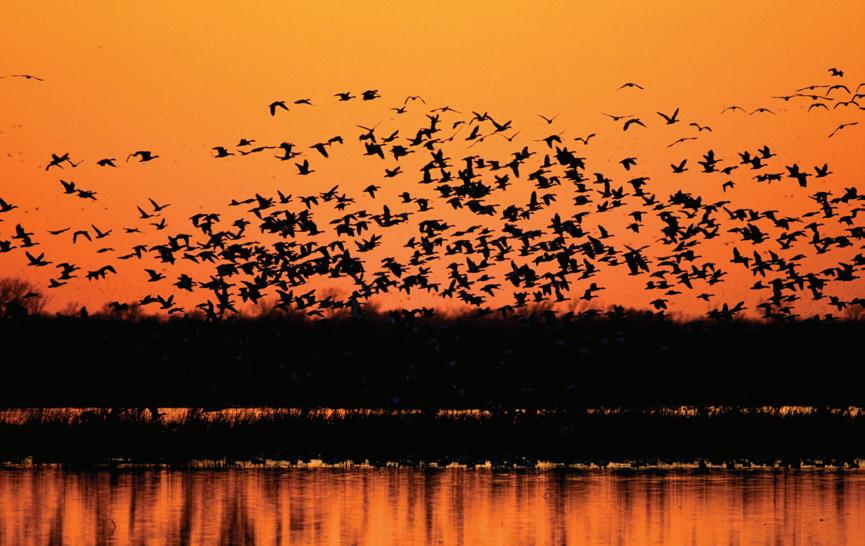

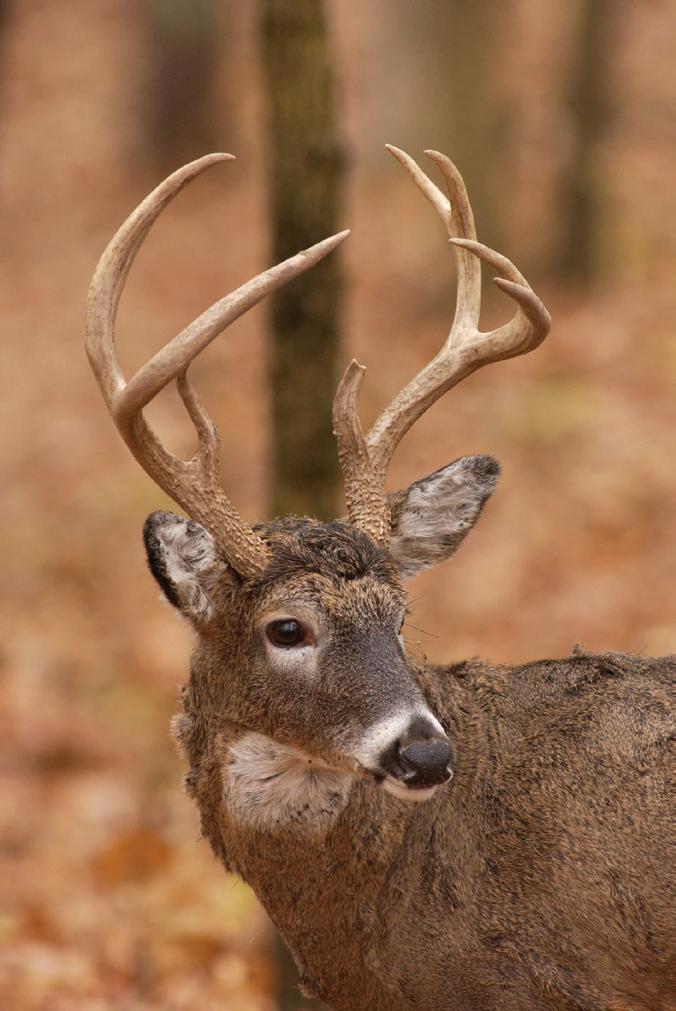

The IDNR Office of Mines and Minerals will have materials and staff on hand to help answer questions about coal
mines, mine subsidence and mine reclamation.
“As a native southern Illinoisan, the Du Quoin State Fair holds a special place in my heart,” said IDNR Director Natalie Phelps Finnie. “I’m delighted IDNR staff will be at the fair again this year to encourage children to try out fishing and visit with the many southern Illinois outdoorsmen and women who are our partners in conservation.”
Conservation Village, located near the Exposition Building, is open 4-8 p.m. on weeknights and noon to 8 p.m. on weekends. For more information about the fair go online to https://dsf. illinois.gov

August A. Busch — Defiance
3550 Route D, Defiance, 63341 mdc.mo.gov/buschrange
Jay Henges — Eureka
1100 Antire Road, Eureka, 63025 mdc.mo.gov/hengesrange
The bright, brisk days of autumn will soon be here. I am ready for it. The other three seasons are good and I enjoy them, but autumn is special to me.
Autumn is a time that lingers in my heart and mind. Cooler temperatures refresh me after a long, hot summer. The landscape will start showing the colors of changing leaves.
Sunrises through the trees are glorious. Sunsets are coppery. The hunter’s moon will shine. Something deep within me yearns to be out there soaking in all the many wonders God created.
I love to watch migrating geese fly across the autumn skies in their V formations. They belt out their calls of reassurance to one another. Their chorus of honks fills the air loudly, then fades away. It continues for many weeks in the autumn sky.
Most birds from spring and summer are now gone, replaced by new birds migrating through on their way south.
Groundhogs are getting ready to hibernate. They will not be seen again until late winter, when they come out to see their shadows – or maybe not.
THE CAMPFIRE
Autumn camping trips have magic all their own for me. Campgrounds are not crowded. Late night, sitting close to the campfire, holds an attraction hard to match. Stars twinkle in the night sky. The flames dance and flicker. I will shift my cool side to the fire and ponder my place in the world. I will also look up and thank God for all the memories I have made in the outdoors.
My days will be either paddling, exploring or reading a good book. It will be quiet, with only the whisper of falling leaves and maybe an owl or two talking about their plans for the evening.
I am attracted to water in autumn. Whether it is a lake, river, or stream, it is another way to escape the craziness, away from the TV, computers, and smart phones; away from the meetings and traffic
jams.
The woods will soon become a kaleidoscope of color reflecting in the water. With the water some degrees cooler, fish also take on new vigor. They know it is time to put on a layer of winter fat and respond accordingly to an enticingly cast lure or fly.
Sometimes, I wade the waters and enjoy presenting a fly to a rising trout. Other times I will be in a boat or kayak casting a lure to whatever fish are there. Sometimes I will float around, fishing or not. If I am lucky, as I come
around a bend in the river or enter a cove, I might see the flush of a wood duck, hear the splash of a beaver’s tail, deer at the water’s edge, or a majestic eagle high in a tree. I will take time to slow down and glory in the turn of the seasons.
I also enjoy hiking during autumn. To me, it is the best time to go hike. The cooler air refreshes as I climb the winding trails up Ozarks hills. When I reach the top, I marvel at the view of the valleys below.
I take plenty of pictures and videos to share with others and enjoy myself. It is one of those times you never forget. It stays with you forever in the photo album of your mind.
I am also a hunter. Autumn is the time of year when the field and forest beckon. My dogs wiggle and squirm at the prospect of a hunt. I yearn to see a flushing pheasant and hear ducks coming into my calls.
As a deer hunter, I used to dream of trophy racks. Now that I am older, if I get a deer,

that is a bonus. What I seek is just being out there in a stand, watching the sunrise and all the wildlife that have no idea I am there.
I also love the smells of autumn. Leaves burning, the smell of wood smoke from chimneys or campfires drifting through the air. The sounds of autumn are distinct, too. Crickets sing their song of summer ending. Crisp leaves cover the ground and swish and crunch underfoot. Squirrels chatter and raise a leafy rattle as they scurry for acorns to bury and try to find again as autumn fades into winter.
I feel sorry, though, for those who do not get to experience all the things that I do in the outdoors during autumn. If more people would get out and try it, I think they would discover, as I have, that autumn is a season that stirs the soul.
“Delicious autumn! My very soul is wedded to it, and if I were a bird, I would fly about the earth seeking the successive autumns.”
–George EliotPeople can grab either their running shoes or hiking boots and enjoy a trek through the Missouri Department of Conservation’s Little Prairie Conservation Area on Sept. 9.
This 342-acre MDC area in Phelps County will be the site of a trail run or hike (it’s the participant’s choice) through part of the area from 8 to 11 a.m.
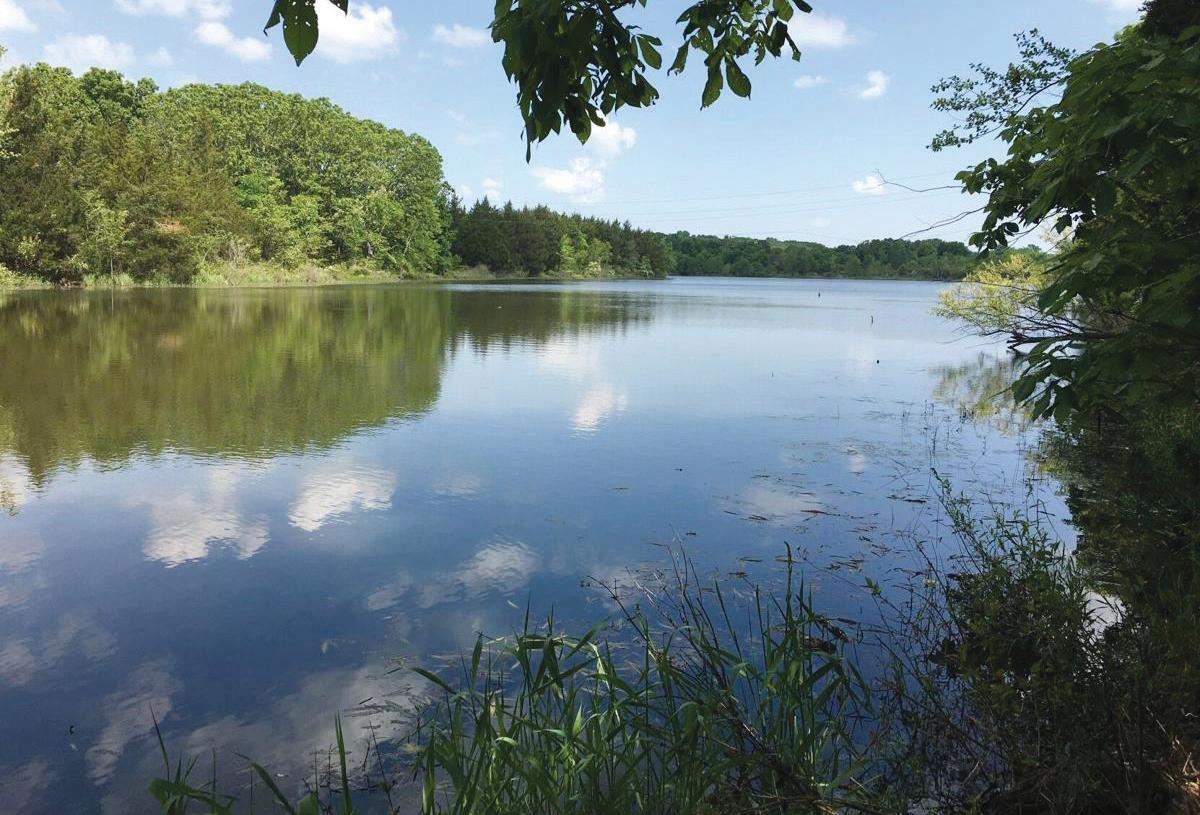
The event will take place along the 3.6 mile trail that circles Towell Lake, a 95acre reservoir on the area. People can register for this event at: https://mdc-eventweb.s3licensing.com/Even/ EventDetails/194630.
“The 3.6-mile trail travels through different manage -
ment regions of the area,” said MDC Conservation Education and event coordinator Dwight Warnke.
“Signage will be provided along the nature trail that describes management practices designed to enhance diversity and health of the Missouri native plants and animals that can be found on the area.”
Current management efforts designed to enhance native plants and animals at the Little Prairie Area will be shared with the event’s participants at 8:30 a.m.
The trail winds through woodland areas, restored grasslands, and areas that feature pollinator plantings. The race/hike will start at 9 a.m. and is open to all ages. The first 100 finishers will
receive MDC water bottles.
Little Prairie Conservation Area, which is located northeast of Rolla and west of St. James, contains a 40-acre remnant prairie, Helbrunn Prairie.
In terms of recreation, the area features hunting, hiking, and photography opportunities on the landscape.
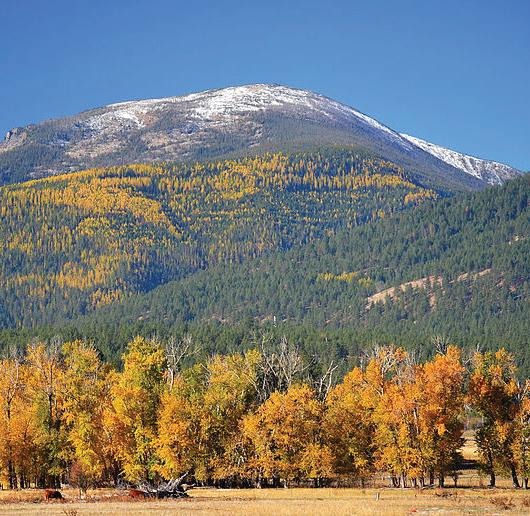
On Towell Lake, fishing is allowed from a courtesy dock on the lake, from the bank or from a boat. (Electric motors and outboard motors are permitted. Outboard motors of any size may be used, but outboard motors in excess of 10 horsepower must be operated at slow, no-wake speed.)
For more information about this event, contact Warnke at Dwightg.Warnke@mdc.mo.gov.
As a deer hunter myself, I know we are plagued with many untimely issues throughout the course of a season. I am going to focus today on a situation that is sometimes positive and sometimes negative. I will lend some advice as we go.
I watch many deer hunting programs on television, and I become extremely jealous of the guys and gals I see there trying to decide which of their 25 stands they would hunt with that day on one of four or five different properties. What a problem to have!
I personally do not know one soul who has that much deer hunting from which to choose. Everybody I know, myself included, hunts deer on a single piece of property, and if they are really lucky, may have a couple of stands up. My data shows that 94 percent of deer hunters across the country will be hunting the same spots they did last year.
That may or may not be a dilemma. The issue I want to talk about today is what to do if you must bow-hunt AND gun-hunt the same piece of ground. This concern gains traction if there are multiple hunters using the same property – and there usually are. I am describing the deer-hunting circumstances of the vast majority of hunters.
So how can we manage our deer-hunting farm for both archery and firearm hunters?
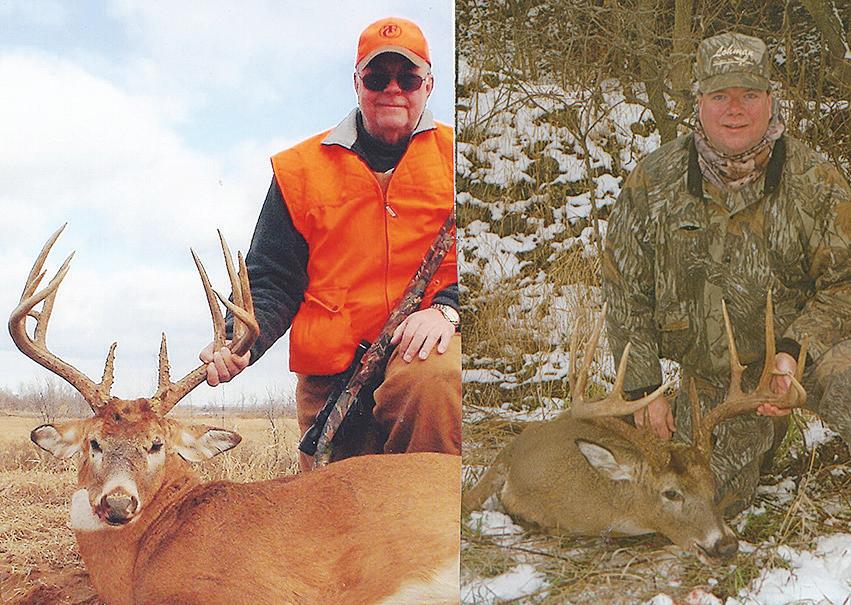
As I will mention several times during this discussion, communication is the key. Everyone concerned needs to get on and stay on the same page. Friendships should not be put in jeopardy over a hunt.
Archery season comes first. The bow-hunters in a group are the first to hit the field. They scout first because they hunt first. If everybody in your group hunts with both gun and bow, this is pretty easy. But problems arise when the gun hunters get to camp several weeks after the archery hunters have been on the ground.
Believe me, the gun hunters often have legitimate gripes. The pressure that early season archery hunting can put on a property can be significant. It may not seem fair to allow the archers to educate the deer weeks before the powder-burners arrive.
It has been my experience that the logical way to approach this dilemma fairly is to use geography as a solution. It does not matter how you choose to shoot your deer, you just hunt in the same location on the property for either or both. You have your locations and I have mine. It sounds pretty simple. That is until one or two stands are consistently seeing deer and nobody else is.
At that point, get creative. You can rotate stands or even have a pre-season drawing for stand sites on geographical areas. Keep it fair and always communicate.
The 2023-2024 Illinois Digest of Hunting and Trapping Regulations is now available online or in print.
For the electronic version, go online to httpa:dnr.illinois. gov/hunting/hunttrapdigest. html. The digest is also being made available in Spanish and Polish.
“The Illinois Department of Natural Resources is pleased to make this informative digest available to hunters and trappers, who are essential partners in conservation and management of Illinois wildlife,”
The exceptions to this rule, for me, are the youth seasons. Kids should get their choice of spots. Every adult in the group should be in total support of the youth hunt. Otherwise, this sport will die on the vine.
So get together over a grill-full of venison steaks
right after spring turkey season, and get your deer hunting strategies for the fall figured out. Opening day of archery season is NOT the time to start this discussion. Good luck, and remember to communicate with one another.
Like and follow Mike Roux Outdoor Enterprises on Facebook

department Director Natalie Phelps Finnie said.
“This annual guide provides a detailed review of hunting and trapping season dates, possession limits, hunting zone boundaries, statewide hunting regulations, license and permit details, and other useful information. IDNR wishes hunters a safe and successful season.”
Hunting licenses can be purchased through IDNR’s online license portal at https:exploremoreil.com or find a vendor at https://exploremoreil.com/ agentlocator
To be a successful trout fisherman, you have to know how to read the water. To approach the matter in any other fashion is to get the cart before the horse. Fishing for trout involves knowing where the fish are. In order to know where fish are hiding, you first must be able to read water correctly. This in turn will allow you to determine where the strike zones are. Without a doubt, the better you understand the fish – their habits, where they move, what they eat and when – the more likely it becomes for you to catch them. That in a nutshell is the intrigue, beauty and charm of fly-fishing.
Keep in mind, however, a tidbit of information I learned on a trout stream long ago from a crusty old fly fisherman. He commented that you can find trout anywhere that they can “survive, thrive and jive.”
In order to survive, trout need the essentials of shelter, oxygen and food. The perfect trout shelters come in the form of deep water, or what is called shadowy water, and structure that will provide them hides –like fallen logs, undercut banks,
and vegetation overhanging the water. Find the cover and shelter, and you will find the fish.
Plentiful oxygen is paramount for trout to survive. In fact, trout are a great indicator of water quality. They are highly intolerant of poor water quality.
Trout primarily find oxygen in riffles, where oxygen is churned into the water flow. The bubbles created by the fast-moving water oxygenate the water. These oxygen-rich spots are trout attractors. And trout need these areas, especially in the heat of summer and the cold of winter, when oxen levels tend to be lower.
Utilizing this knowledge, you will discover that on any given Ozark stream, with water cool enough to support trout, you will find them in holes and pockets of deeper water just below a run or riffle. Trout hang there because they can absorb the maximum amount of oxygen, while enjoying the benefits of cover and being able to expend less energy in these slower moving pools.
Trout would be regarded as lazy creatures if they were
A rainbow trout holds in a transition spot, waiting for a morsel of food or a trout fly to drift into the strike zone.

human. Trout survive by their very nature of conserving energy. They remain in one spot to expend as little energy as possible, while picking up food morsels that drift downriver. The less a trout has to move to feed, the better.
So, when out on a trout stream, look for spots where trout are not going to have to expend a lot of energy searching for food. If the water is a bit high, look for banks with overhanging vegetation. Bugs will fall in the water. Now is hopper season, and grasshoppers will find their way into the water. Trout sit in wait for insects to hit the water. It’s easy pickins’. Easy prey makes for happy trout that will survive.
Trout are opportunistic feeders. They feed on a wide variety of aquatic insects, worms, crustaceans, minnows and terrestrials. Tailwater trout – those in streams below dams – often can sit in one area all day and have a steady supply of food coming downstream to them. Trout in other streams don’t have the luxury of such a steady food supply and must situate themselves in the river system very carefully.
Trout look for transitions in a stream. As an angler, you too must read the water and look for those same transitions. Look for changes such as trees, or bushes that overhang the river, or cast a shadow.
Casting a fly to the transition zone where light turns to shade is a good move. Trout will hold in such spots, waiting on unsuspecting prey. They also are there because such spots offer protection from bright light and predators. Too, they can quickly dart from the cover of this ambush point to snatch a bug and quickly return to their hide. They are geniuses of the survival game.
Deep to shallow water is another great transition to fish. Right where a riffle drops into a deep hole is a great place to cast your flies. These seams, where fast water hits slow water, are easily visible and are major targets for fly fishermen. Trout will most often hold in the slower water. They expend less energy there. However, it is the fast water that delivers the food. Trout, as a result, will then hold near the seam between the fast and slow water. Therefore, that is the prime place to deliver your fly.
Keep in mind as you are working a stream that trout will move only for one of three reasons – to feed, to find shelter or to spawn. Trout key in on favorite spots and generally
will not leave them, unless forced. They pick the best spots to survive and thrive with as little effort as possible. These favorite spots are transitional water, provide shelter, and food comes with little effort. There isn’t any reason for them to go anywhere else. If a trout does have to move because the water dropped, or a bigger, competing fish took its spot, the trout is going to be searching for food, another sheltered spot with ample oxygen, and good water transitions. Typically, most trout will not move over 100 feet in a river system. However, a moving, searching fish is quite vulnerable to an experienced fly fisherman. There you have it:
• Look for transitions in the water.
• Find shaded areas with shelter.
• Look for riffles and breaks, like big rocks or logs.
• Remember the oxygen connection. These factors provide the “survive-and-thrive” for trout. Then if you can cast your fly to that perfect spot, you will have provided the “jive” for a great trout-fishing trip.
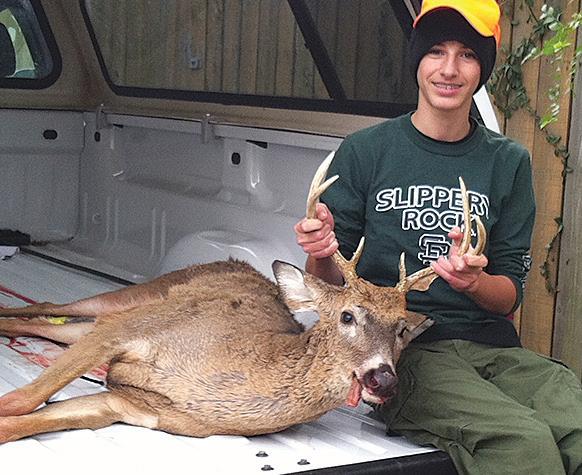
Both of my sons currently serve in the U.S. Army. My oldest, Chayce, is with the 173rd Airborne, stationed in Italy while my youngest, Chance, is a member of a Stryker battalion in Washington state.
Speaking with them on a somewhat regular basis, I sense their attitudes are much like mine of nearly 40 years ago, when I served in the U.S. Marine Corps infantry. We trained hard while sweating or freezing during the regular field operations, and we partied hard on the following weekends.
Though some believe our military has been diminished over the past several years because of low recruitment and “woke” policies, trust me when I tell you that most of these young men and women serving today are just as hardy as the young Marines I served alongside all those years ago.
And with tensions rising throughout the world, especially with China and Russia, we need these dedicated, pa-
triotic, young people serving our country.
My wife and I never forced military service upon them. Though their grandfathers, father and an uncle are veterans, I made sure they were aware that military service isn’t for everyone. I reiterated the point that it isn’t what you see on television or in some of these Hollywood productions that often sensationalize war and the military itself. There are good times and bad ones, and it’s mostly what you make of it. Neither did we force God and religion upon them, though there were times when we might speak about the greatness of the Creator in our own lives. I wanted them to find God on their own, possibly from life in general, or, like myself, in the great outdoors.
The youth hunts are a wonderful way to introduce your youngsters to the outdoors.
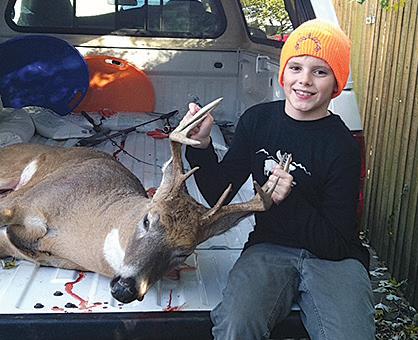
Though I had taken my young sons on fishing excursions and on a squirrel hunt or two in the past, I think they would agree that the youth deer hunts were our most enjoyable times together.
Seeing the excitement in their faces when they harvested their first deer is what it’s all about – along with the disappointment of a miss, or a long morning without seeing a whitetail. It’s living and learning and enjoying God’s creation at the same time.
We were fortunate to be able to hunt on a private parcel of land in southern Lincoln County that had decent populations of deer, squirrel and turkey. Chayce took an 8-point buck during his second youth hunt and a nice-sized doe the following season, while Chance harvested two 10-point bucks in back-to-back seasons (I believe 2015 and 2016). Of course, there were also a missed 8-point buck and a doe or two before these successes, but that’s hunting, right?
I know not everyone has access to private property, but there is plenty of public land in the St. Louis region.
The August A. Busch conservation area in St. Charles County has plenty of small lakes and ponds for angling, and it sponsors deer and turkey hunts through a management system. The William Logan Conservation Area in southern Lincoln County is open to the public for deer, turkey and
small game, and it has a few ponds and a creek for fishing also. The William and Erma White Memorial Wildlife Area is just up the road from Logan and is also available for public use. These conservation areas are within a 45-minute drive of St. Louis.
The whole point of spending time outdoors with youngsters is to get them excited about being there, and letting
them witness the wonders of nature and possibly see the much bigger picture of where their place is in God’s glorious creation. There may be some ice-cold mornings where nothing is moving, or hot afternoons where they’re peeling off their camo jackets and fending off pesky mosquitos, but if you can get them away from their smart phones or PC’s on enough occasions, eventually they will appreciate the outdoors, or, at least, spending time with you.
Oops! I hate it when that happens! I foolishly failed to lift my bow arm adequately above the blind windowsill level, and WHACK!
All I had to show for a patient, four-hour vigil on-stand was my 30” Zebra Gold Tip arrow sticking harmlessly in the blind wall, and all I had to see were whitetail deer flagging white middle fingers at me, off and running, vanishing into the distance!
We must all admit that at one time or another, we have pulled off some of the dumbest numb-nut moves a hunter can possibly commit.
Having plunged full-on heart and soul into the spirit of the wild ether of the bow hunting way, way back in the 1950s as a clueless youngster, I am confident that I have made every possible mistake there is to be made in the wonderful outdoor lifestyle.
It can get to be very, very frustrating, but one learns early on to never, ever give up and just keep on keeping on, trudging along, learning everything we can every step of the way.
Unfortunately, what truly qualifies as the ultimate numb-nut mistakes are those
we foolishly repeat over and over, again and again.
As humans, we have this guaranteed tendency to make mistakes, but with a little forethought and dedication, we can certainly eliminate, or at least meaningfully reduce, such errors afield.
The blind whacking blunder above fortunately took place many years ago, and it made me so damn angry that I vowed I would never be so stupid ever again. So far so good!
With our Ted Nugent Spirit of the Wild TV celebration entering its 34th year, airing eight times a week on the Pursuit Channel, you might want to stay tuned to see if I drop my guard and blow it again right there for the whole world to see on television. If I do, I promise not to edit it out, for your maximum entertainment value.
Speaking of the joys of all those wonderful hunting shows we can all enjoy on our television sets and whatnot technology these days, I am compelled to point out some incredibly valuable lessons available to us on many of those shows.
Some of the stuff I’ve seen is downright fascinating.
More times than I wish to
admit, I’ve watched bowhunters so struggle to draw back their bows that it always amazes me why anyone would want to attempt to bowhunt with such a ridiculously heavy draw weight, anti-archery bow.
I’ve actually watched guys and gals fail to come to full draw because they are so overbowed. And even the ones that do succeed at full draw go through so many obtuse gyrations that the game is alerted and the shot is either blown or a bad hit is made on a very alert animal.
The lesson here is to approach bow hunting and archery by focusing on grace, stealth, form, and silence. Ann Hoyt killed everything in North America with a 35-pound draw-
weight recurve bow, shooting heavy, slow, (@150fps) 500600 grain cedar arrows fronted with a razor sharp, two-blade broadhead, waiting to make the right shot to the right spot. My amazing Queen of the Forest, Little Miss Dangerous and ultimate bow-hunting buddy wife Shemane, kills all her big game using a 30-pound draw Mathews bow, (YES! 30 pounds!) shooting a 30”, 400 grain GoldTip arrow with a 100 grain, scary sharp, two blade SteelForce broadhead, always straight into the pump station. She bowkills a lot of big animals, and they always die quick and within sight.
I kill big game cleanly, constantly, with my new 46-pound Mathews Image, shooting the same arrow
with a deadly, 100-grain Levi Morgan Swhacker broadhead and the SteelForce two blade.
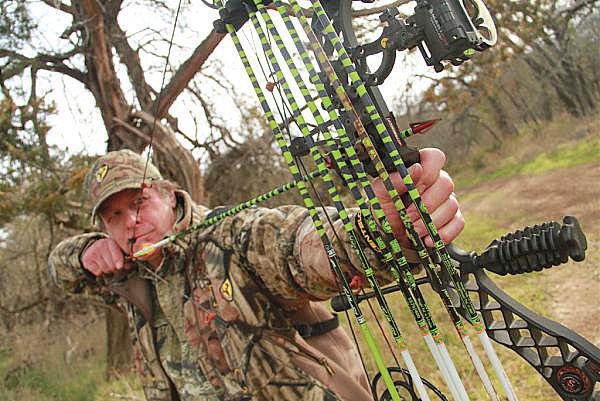
I’ve had more than a few cringeworthy moments, watching guys on TV shooting at game with rifles, missing by a mile, and then mentioning how maybe they ought to go to the range to sight it in. Huh!
Of course the glaring lesson here is the standard operating responsible procedure of sighting in our weapons before the hunt, not after missing!
Another doozy is when a rifleman has the scope set on the highest power and then gets frustrated when he cannot find the animal in the scope.
Worse yet is the mistake when tracking an animal and having the scope on its highest power. Sage advice from the most experienced experts is to keep the scope on a low magnification until a longer-range shot dictates otherwise.
And always keep it on the lowest power setting when tracking a hit critter for maximum field of view and instantaneous sight/target acquisition.
As I increased my use of ground blinds and various enclosed blinds over the years, like the amazing portable Primos and Muddy pop ups, and the killer Texas Tank Blind,
I learned right away that a lighted sightpin was essential for low light conditions, or otherwise you simply will not be able to see your sightpin in the darkness of the blind.
How many times have we seen or heard our fellow crossbow hunters banging a bow limb against a tree trunk, tree limb or blind wall!
And don’t forget those squeaky treestands, blind chairs or arrow rests that end up blowing that long-awaited, hard-earned shot, losing the opportunity due to game-spooking noises we should have eliminated.
Thoroughly testing all of our equipment prior to the season can eliminate all of these very predictable fails. We put so much effort into figuring out the right place and right time, so why blow it due to a silly mistake that we could have and should have avoided if we just were more diligent and attentive?
I for one want to stack the deck in my favor because God created these fascinating creatures, giving them miraculous skills at evading us human predators.
The critters won’t tolerate numb-nut mistakes. Neither should we.
LEBANON, Mo. – With a few shovelfuls of dirt, plans to improve trout production at Missouri’s Bennett Spring Fish Hatchery took a major step closer to becoming reality on Aug. 2.
Department of Conservation (MDC) staff joined legislators and local officials for a groundbreaking ceremony that kicked off the construction phase of the renovation project. The hatchery supplies trout Bennett Spring State Park and other trout-fishing locations around the state.
“The renovations taking place here at Bennett Spring Hatchery show the Missouri Department of Conservation has a strong commitment to our citizens’ appreciation for the outdoors,” MDC Deputy
Director Jennifer Battson Warren said at the event.
“The joy of catching trout at Bennett Spring is an experience that has made wonderful memories for generations of Missouri families,” she added.
“This project will ensure that these memories will continue to be made here at Bennett Spring and other places that receive trout from this hatchery.”
Cahills Construction Inc. of Rolla was awarded the contract for this multi-year, $40 million renovation that will include a new intake structure, reconstruction of raceways, and water quality improvements, plus other upgrades and refurbishments to improve fish production capability and site resiliency.
MDC has worked with
Missouri Department of Conservation staff members join state and local officials on Aug. 2 to break ground for the construction phase of renovations to Bennett Spring Fish Hatchery. Fishing will continue. – MDC photo

closely with its design consultant, HDR, Inc., for a year and a half to get the project ready for construction.
Construction will disrupt fish production at the Bennett Spring Hatchery, and visitors will notice some of
the raceways will be empty and dry. However, fishing will continue at the park with minimal disturbance as trout from MDC’s other hatcheries will be transported to Bennett to support stocking activities throughout the year.
Department officials noted that a facility the size of Bennett Spring Hatchery, which produces approximately 350,000 trout per year, cannot be taken out of production without affecting the trout inventory numbers in MDC’s statewide cold-water hatchery system. So hatchery staffers across the state will work to manage inventory levels and provide anglers with the best possible angling experience for the remainder of this year and throughout the renovation of Bennett Spring Hatchery.
In addition to providing recreational activity, trout produced at Bennett Spring Hatchery also provide economic benefits. Each year, 140,000 people fish at Bennett Spring. These anglers are part of the more than 2 million visitors the park gets annu-
ally, and the economic ripple effect this activity generates in terms of money spent on meals, lodging, gas, etc. is significant.
Data from the U.S. Fish & Wildlife Service indicates that money spent on trout fishing in Missouri generates more than $187 million in economic impact each year.
Trout fishing at Bennett Spring has a history dating back to the early 1900s. Currently, MDC manages the hatchery and trout fishing at the park, while the state park facilities are managed by the Missouri Department of Natural Resources.
Fishing will continue with minimal disruption at Bennett Spring State Park throughout construction.

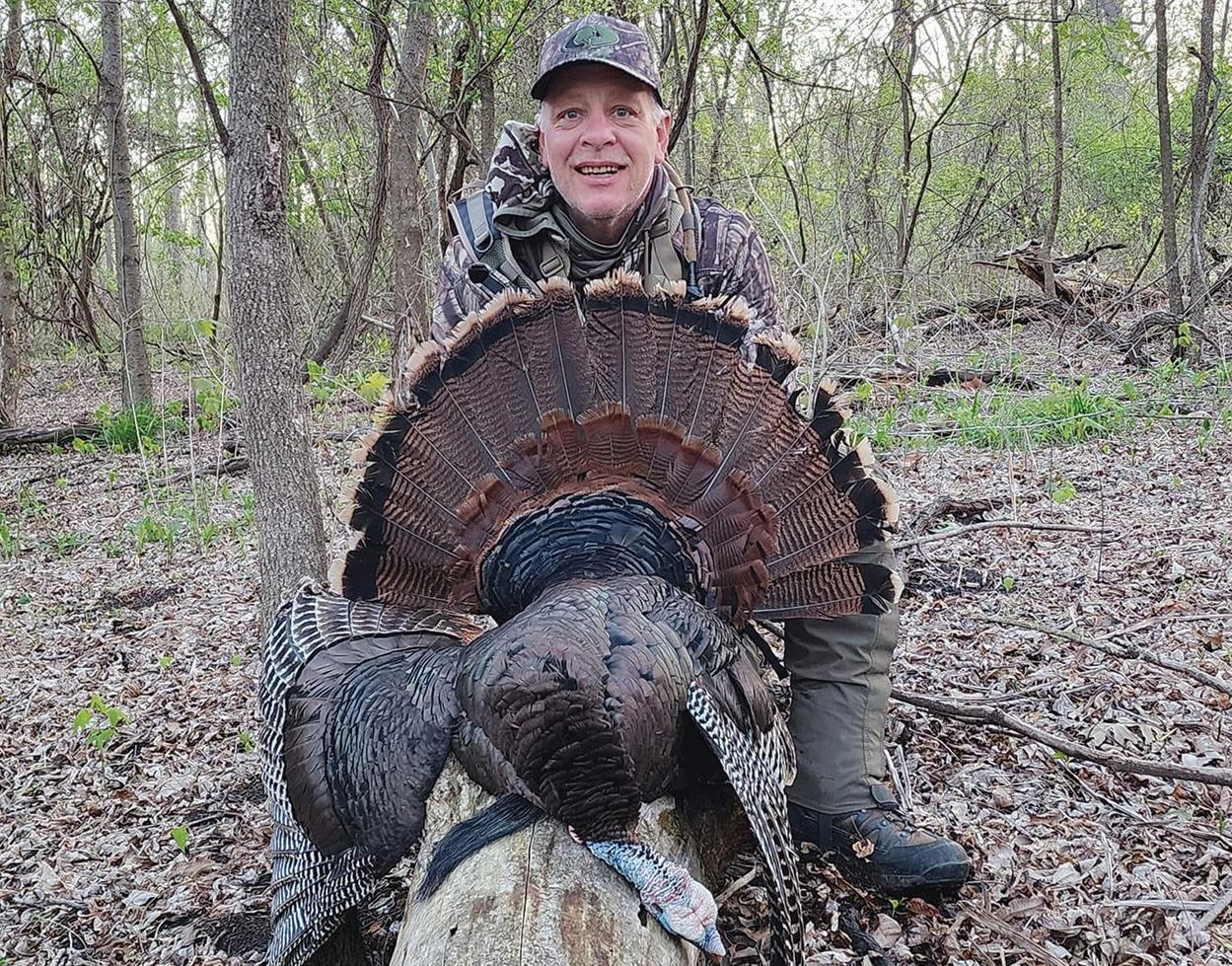
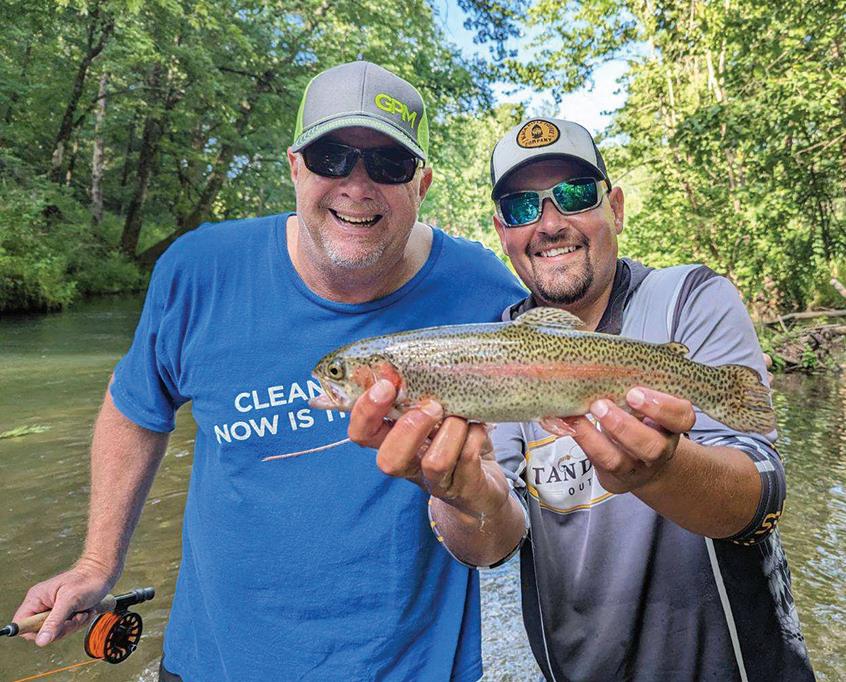

Missouri Department of Conservation (MDC) properties are undergoing major renovations this year to help residents connect with natural resources throughout the state, the department reports.

• Fountain Grove – This conservation area in Livingston County is getting a new pump station with three electric pumps pulling water from the Grand River. They will replace a single diesel pump. They will increase the volume of water and allow more variance in flows as needed for weather and waterfowl needs at 7,906-acre area. Water is pumped only if the flow in the river in sufficient, so the pumping will not affect the river’s ecology or agriculture uses. Completion is expected in May.
• Jerome Access – This Gasconade River access point is ready for concrete work
and final grading in Phelps County, about 15 miles west of Rolla. Rough grading for a half-acre parking lot and boat ramp is complete. The two-acre site will also allow bank fishing.
• Shepherd of the Hills Conservation Center – A new, $6.7 million center has been under construction this summer to replace the old center that was demolished. Improvements include utilities, the foundation and parking. Completion is expected in December, 2024.
• Schell-Osage Conservation Area – Excavation and construction are underway on a $6.4 million pump station at this location in northeast Vernon County. The project will improve the area’s wetlands for waterfowl, shore birds, and wading birds, and improve Schell Lake for fishing. The project contract was awarded to Garney Companies, Inc., with completion
The Missouri Department of Conservation will hold its 2023 Missouri Conservation Partners Roundtable Oct. 11-12 at the University Plaza Hotel, 333 S. John Q. Hammons Parkway in Springfield.
There is no fee, but participants should register by Sept. 22.
It will be the seventh annual Partners event, beginning on Wednesday afternoon and continuing through Thursday afternoon. This year’s theme is “Sharing the Conservation Journey.”
Rooms have been reserved for attendees Oct. 10-12 at a special rate of $109, using group code 2310MDCOI.
Speakers will include the following people plus additional conservation leaders:
• DavidTenny, of the National Alliance of Forest Owners.
• Dave Murphy, a former MDC commissioner.
• Ashley Smith, of the Minority Outdoor Alliance.
• Mitzi Reed of the Native American Fish and Wildlife Society.
slated for December 2024.
• Lebanon Rural Firefighting Equipment Center
– Crews are working to renovate the center building in Lebanon, with framing and electrical work for a bay being renovated into a conference room, plus exterior renovations.
The contract was awarded to Bales Construction Co.
• Bennett Spring Fish Hatchery renovations
– Groundbreaking was held Aug. 2 for improvements to include a new intake structure, reconstruction of some raceways, piping improvements, and other upgrades. They are designed to allow the hatchery to better maintain operations during flooding and improve fish production capability. Improvements will also be made to the office, shop, and feed storage facilities. For more information, go online to https://short.mdc. mo.gov/4PH.
Illinois Department of Natural Resources
Topics will include the evolution of conservation in Missouri, the role landowners have played, increasing diversity and generational shifts in the outdoors, “Traditional Ecological Knowledge” and urban agriculture.
“Breakout” group discussion sessions will be held on Thursday, in which attendees can brainstorm, collaborate and discuss the future of conservation.
Optional field trips are planned for Wednesday morning, one at Valley Water Mill Park and another a tour of Springfield Stream Naturalization projects.
Participants may sign up for one of them when they register. Contact Emily Porter at Emily.Porter@ mdc.mo.gov or call (573) 522-4115 extension 3148.
Illinois Conservation Police have concluded an investigation into the poaching of more than 20 wild turkeys by out-ofstate hunters, mostly from Mississippi, in the Alton-Wood River area in Madison County. Conservation police initiated an investigation in March, 2022 after wild turkey carcasses were located. During the investigation, authorities identified individuals who had been poaching wild turkeys at night in or near the city limits of Hartford, Alton and Wood River.
It was determined the men used AR-style rifles equipped with thermal imaging scopes and suppressors.
Seven people were arrested in connection with the investigation, and a total of 63 misdemeanor charges were filed against them. Individuals charged were Dustin Goldsmith of McCall Creek, Mississippi; Hunter Baxter of Lucedale, Mississippi; Nick Henley of Monticello, Arkansas; Benjamin Emerson of Lucedale, Mississippi;
Dakota Jarratt of Wilmar, Arkansas; Matthew McClendon of Augusta, Georgia; and Jacob Russell of Ruth, Mississippi.
Additional felony charges were filed against Baxter and Goldsmith. Baxter was charged with two felony counts in Madison County, including possession of a suppressed firearm and resource theft more than $3,000. Goldsmith was charged with a felony count of resource theft of more than $3,000.
In addition to allegedly poaching more than 20 wild turkeys, police also alleged
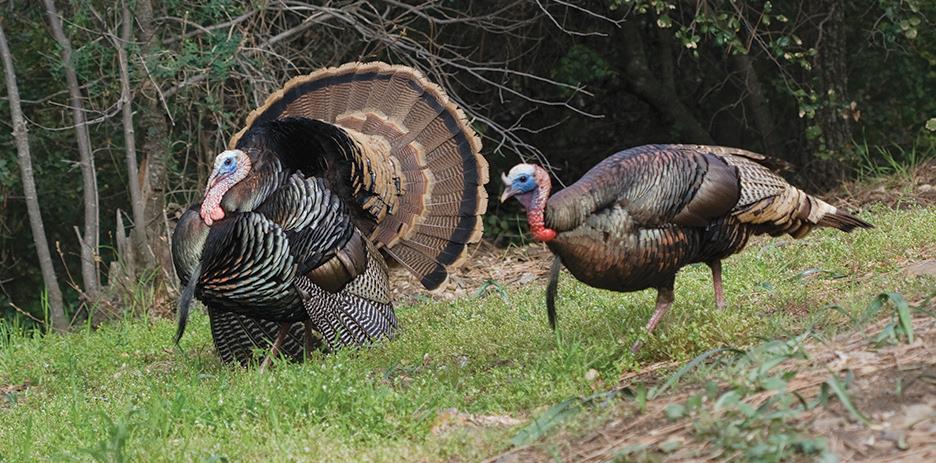
three cotton-tailed rabbits were poached from a vehicle with a suppressed rifle equipped with thermal imaging scopes in Calhoun County.
Court dates have been set in both Madison and Calhoun counties for all individuals involved. The defendants are presumed innocent unless proven guilty.
“Poaching is a serious crime that can cause tremendous harm to wildlife and biodiversity. Conservation laws are in place to ensure wildlife
resources are around for future generations to enjoy,” said Jed Whitchurch, director of the Illinois Department of Natural Resources Office of Law Enforcement.
“I encourage anyone who is aware of poaching crimes in Illinois to come forward with tips. People have a responsibility to understand these laws and to follow them.”
To report poaching and other illegal activity, complete the Target Illinois Poachers (TIP) incident reporting form at https://bit.ly/IDNROLETIP or call (877) 236-7529.
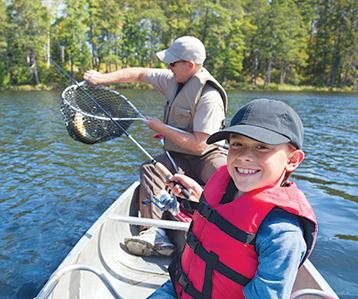
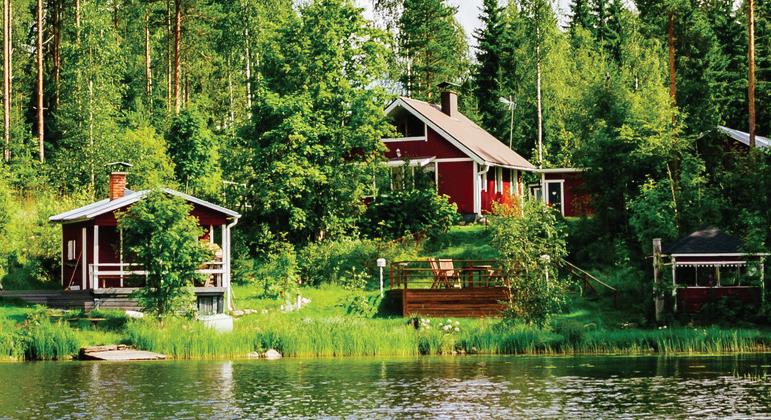

The Missouri Department of Conservation (MDC) and the Missouri Conservation Commission honored retired Resource Scientist Lonnie Hansen of Columbia with the Master Conservationist Award. Hansen and his wife Kathy received the award July 14 following the Commission’s meeting in Columbia. He was nominated by former colleague Eric Kurzejeski of Columbia.
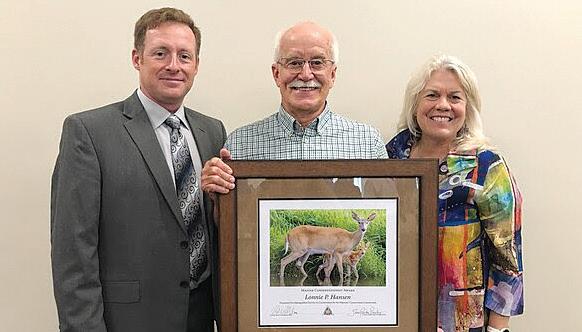
Hansen is the 67th person to receive the award. The Master
Conservationist Award honors living or deceased conservationists, former MDC commissioners, and employees of MDC and other conservation-related agencies, universities or organizations who have made substantial and lasting contributions to the fisheries, forestry or wildlife resources of the state.
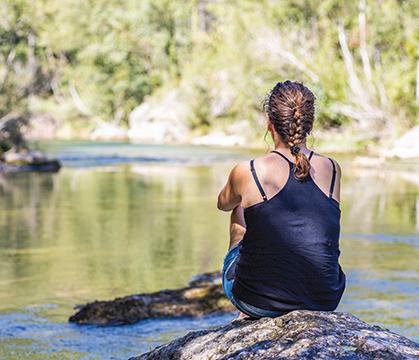
Hansen joined MDC in 1987 as a wildlife biologist and retired
as a resource scientist more than 30 years later in January, 2015.

Early on, Hansen focused on deer management, designing and implementing a series of large-scale deer research projects designed to collect reproductive and survival data to better manage the state’s deer population.
He also focused on balancing the needs of hunters, landowners, and the general public with the need of a healthy, plentiful, and sustainable deer popula-
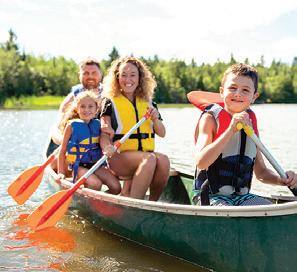


tion statewide. He also led the design and implementation of an electronic system to sell permits and collect harvest data and hunter demographic data, called Telecheck.
Hansen helped landowners whose crops suffered deer damage, using a simplified process to obtain special permits and reduce their specific problems.



Hansen also guided MDC when chronic wasting disease became a national concern in the early 1990s.

The Missouri Department of Conservation (MDC) reminds hunters that the pre-season reservation period for managed waterfowl hunts this season will run Sept. 1-18, with results to be posted Oct. 1.
The in-season weekly drawings will take place on Monday afternoons with a seven-day application period that opens the Tuesday before and closes the Monday of the draw at 3 p.m.

Missouri residents and qualifying non-residents, such as students from out of state or members of the military stationed in Missouri, can apply online for a reservation to guarantee them an opportunity to hunt on a specific day on a specific area. Residents and nonresidents can also arrive at a managed waterfowl hunting area the morning they wish to hunt and wait in line for the possibility of getting a hunting spot.
Applicants for waterfowl reservations must have their required permits to apply and their Federal Duck Stamp to hunt.

MDC offers managed waterfowl hunting on more than a dozen conservation areas specially managed with a focus on wetlands. Hunters can apply for a reservation or participate in a daily morning drawing for opportunities to hunt at these areas.
MDC also offers waterfowl hunting on other conservation areas. In addition, Missouri offers waterfowl hunting opportunities at numerous other public and private locations around the state.
For this fall, the MDC waterfowl reservation system will offer 50 percent of daily hunting positions for the managed-hunt areas through online reservations. Of the 50 percent of spots through online reservations, half will be for pre-season applications and half will be allocated during a weekly in-season application period.
The remaining 50 percent of spots will be held for hunters who participate in the daily morning drawing and wait in the “poor line” for the possibility of getting a hunting spot.
Successful pre-season and
in-season reservation applicants will be notified after their respective draws via email or text message with their hunt date, location, and pill assignment. “Pills” designate the order hunting parties select their hunting locations on the area. The lower the number, the sooner hunting parties get
to select their hunting location. Only one member from each hunting party will be allowed to have a staff member pull a pill for their respective party. Residents and nonresidents can hunt with a reservation holder and hunting parties are limited to a maximum of four people.
Hunters with disabilities can apply to use ADA hunting blinds through the online reservation system during the same timeframe as the preseason application period. ADA blinds that are not selected and allocated during the preseason drawing will be placed in the weekly in-season draws.
For more information, go online to mdc. mo.gov and search for Waterfowl Reservations, or get a copy of the MDC 2023-24 Migratory Bird and Waterfowl Hunting Digest, available online and where permits are sold.
